Posts Tagged ‘prevention’
Posted on: July 10th, 2020 by Waterloo Region Crime Prevention Council
Todd Coleman
Todd Coleman is an assistant professor of Health Sciences. His research is focused on population health and research methods. Coleman also explores health issues as they differ according to sexual orientation and gender identities.
“As someone who counts themselves as part of the broader LGBTQ2S+ community, I became aware early on of the differences in health outcomes depending on your identity. That became a driver for me to find out what we can do to change that.
“I was a collaborator on the OutLook Study and one of the findings that stood out was the notable differences in victimization between cisgender and trans individuals. On average, trans people felt higher levels of victimization and lower levels of safety.
“There is a concept we’re exploring called ‘anticipated discrimination.’ Some trans people are anxious about interacting and visiting places that most cisgender people take for granted. Fifty-seven per cent of trans respondents in the OutLook Study avoided public washrooms. Eighty-three per cent felt unsafe at gyms. Seventy-three per cent felt unsafe in medical offices, including their doctor’s office.
“We just wrapped data collection for a qualitative study looking in more depth at the discrimination that trans and non-binary individuals experience in the Waterloo Region. We are collaborating with the Waterloo Region Crime Prevention Council to help influence policy at a local level and to help us disseminate our findings.
“The more research on these topics that takes place, the more people become familiar with concepts and the health disparities that exist. We are encouraging more education for health-care providers so they understand the nuanced differences between patients and how to treat them effectively and respectfully.”
https://www.wlu.ca/news/spotlights/2020/june/pride-month-research.html#todd-coleman
Laurier Researchers in Their Own Words June is Pride Month and Wilfrid Laurier University is proud to highlight some of its students and faculty members studying issues that affect lesbian, gay, bisexual, transgender, queer or questioning, and two-spirit (LGBTQ2S+) individuals and communities.
Posted on: July 2nd, 2020 by Waterloo Region Crime Prevention Council

What are Porch Chats?
Porch chats are an opportunity for the community to come together and have conversations about what’s happening in our community. They are to promote understanding, build community connections and facilitate action among citizens and communities. Porch Chats are part or the Friends of Crime Prevention initiative and chat ideas are brought forth my members of our community. Some porch chats have been recorded and can be found below.
Brought to you by the Friends of Crime Prevention, All 2020 Porch Chats are part of the #KeepFamiliesSafe Campaign. #KeepFamiliesSafe is rooted in raising awareness of family, friends, neighbours and people in the work place about family violence especially under the strain and isolation of the pandemic. It encourages community to pay attention and equips them with ways they can help.
Usually Porch chats are held on the porch and surrounding gardens of the historic Governor’s house, home of the Waterloo Region Crime Prevention Council at 73 Queen St. N. in Kitchener. But, adapting to Covid-19, we will meet on a virtual porch. BYOL (Bring your Own Lemonade) See you there!
We have had four Porch Chats on Prevention Family Violence over summer all delivered in English. With the help of generous community members we have been able to offer Porch Chats in languages other than English. If you would like a Porch Chat facilitated in your language please contact Julie Thompson.
Upcoming Porch Chats :
Impact of Migration on Families and the added Risks During Covid 19
Recognizing that family violence takes place in all cultures, we have worked with the #KFS coalition partners to extend the conversation into languages other than English. Lucky to meet Asmaa Cober, she helped coordinate four of these Porch Chats, in four different languages starting with those she spoke. These are the first Porch Chats facilitated in languages other than English. We hope to extend the conversation into others of the rich and diverse communities that make up Waterloo region.
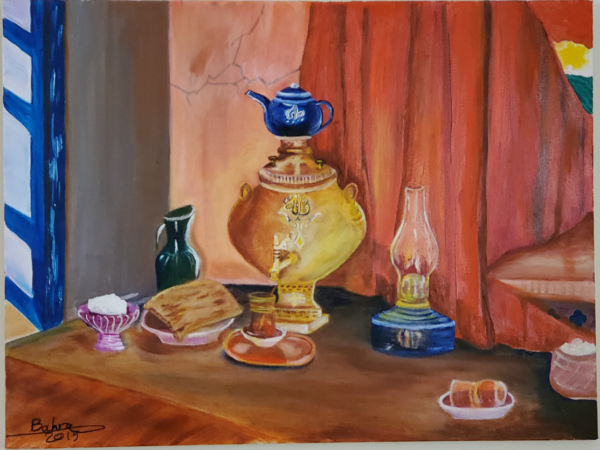
In this porch chat, we will build understanding how family relationships, mental health, and stress levels change after arrival to a new home and how is that connected to Covid 19 situation. We will have a dialogue about cross generational and cross cultural conflict that can lead to family violence. We will present signs of abusive relationships and discuss what we can do as community members in helping families stay safely together. We will explore some tips to help adults and children to use conflict resolution skills to solve problems. We will elaborate on some services that are available to help families improve relationships and maintain family peace. Our main goal help communities come together to keep families together and safe.
We are a coalition of 18 organizations concerned about the impact of the Pandemic on families. Like the increased stress and isolation of the pandemic, family strain is universal and we need each other now more than ever. Please help us get the word out.
In Farsi : عنوان این گفتوگو «تأثیر مهاجرت بر روابط خانوادگی» است
در این گفتوگو، ما به چگونگی تغییر روابط خانوادگی، بهداشت روان و بالارفتن سطح استرس پس از ورود به خانهٔ جدید (کشور میزبان) و نیز ارتباط آن با وضعیت همهگیری بیماری کووید ۱۹ (کرونا) خواهیم پرداخت.
همچنین ما درمورد درگیریهای بیننسلی و میانفرهنگی گفتوگو خواهیم کرد؛ عواملی که هر یک یا با هم میتواند به بروز ناآرامی و خشونت در خانواده منجر شود.
ما نشانههایی از روابط خشن یا دارای آزار را ارائه خواهیم داد و سپس درمورد آنچه میتوانیم بهعنوان اعضای جامعه انجام دهیم تا کمک کند خانوادهها در امنیت و آرامش کنار یکدیگر زندگی کنند به بحث خواهیم پرداخت.
نکات ما، برخی راههای برای کمک به هر دو گروه بزرگسالان و کودکان در استفاده از مهارتهای حل تعارض را در برمیگیرد و همچنین در مورد برخی خدماتِ روانشناختی و اجتماعیٍ دردسترس که برای کمک به خانوادهها در بهبود روابط و حفظ آرامش توضیح خواهیم داد. هدف اصلی ما حفظ خانوادهها در کنار یکدیگر در محیطی امن و آرام است.
Monday, November 30, 2020: Register Here
In Arabic : تاثير الغربة على العلاقات العائلية
خلال الجلسة سوف نركز على النقاط التالية : التاثيرات والتغييرات في العلاقات العائلية والصحة النفسية بعد الهجرة الى مكان جديد، وارتباطها بوباء الكورونا. سوف نناقش الازمات المتعلقة بالاجيال والثقافات المختلفة والتي قد تؤدي الى عنف ضمن الاسرة. أيضا، سوف نتكلم عن مؤشرات العلاقات الغير صحية أو المسيئة وماذا نستطيع ان نفعله كاعضاء في مجتمعنا لمساعدة العائلات، لكي يشعروا بالامان مع بعضهم البعض. سنتطرق ايضا الى بعض المفاتيح الاساسية لمساعدة الاولاد والكبار بتطوير مهارات حل النزاعات. كما سنتكلم عن الخدمات المتواجدة لمساعدة العائلات بتحسين العلاقات فيما بينهم والمحافظة على السلام والسكينة. هدفنا الاساسي هو المحافظة على وحدة وسلامة الاسرة.
Dec 2; Register Here
In Turkish : Göçün Aile İlişkilerine Etkisi
Yeni bir yaşama başladığımız bu yeni ülkede, aile ilişkilerinin, akıl ve ruh sağlığının, ve kişisel stres seviyelerinin nasıl değiştiğini ve COVID19’un bu değişimdeki etkisini konuşacağımız bu sohbette, aile içi şiddete yol açabilen, nesiller ve kültürler arası çatışmalarla ilgili diyaloglar da kuracağız.
Kötüye kullanılan, suistimal edilen ilişkilerin izlerini sürecek, toplum olarak ailelerin nasıl bir arada huzur içinde ve güvende yaşamasını destekleyebileceğimizi ele alacağız.
Yetişkinlerin ve çocukların fikir ayrılıklarını nasıl çözebilecekleri ile ilgili bazı ipuçları paylaşacağız. Ailelerin ilişkilerini iyileştirmelerine ve aile huzurunu sürdürmelerine yardımcı olmak için mevcut olan bazı hizmetlerin üzerinde duracağız.
Bu sohbetteki ana hedefimiz ailelerin bir arada ve güvende olması için ne yapmamız gerektiğini bilmek, gerekeni yapmak ve iyileştirici adımlar atılmasını sağlamaktır.
Dec 8 Register Here
In Kurdish (Sorani and Badini): ‘ئه م دئ جاوه دانوستاندينئ دگه ل خو و خيزان و زاروكين خو كه ين’
ئه ف بابه ته دئ ل سه ر وئ جه ندئ بيت ئه م دئ جا وه خو و خيزانا خو دير كه ين ژ نه ئارام بونا ميشيكي و هزرا و هه ر نه ئارام بونه كي ده مئ دهيه وه لاته كئ ني و تايبه ت في وه ختئ ئه م هه مي تيدا دژين يئ كورونايئ دا (COVID 19)و هه روه ها دئ جاوه خو و خيزانا خو ژ في فايروسي پاريزين.و دئ جاوه كه لتوري خو كونجيني دگه ل كه لتوريت دي و سه ره ده ريئ و هاريكاري دگه ل ئيك كه ين دا پيكفه ده ستيت خو بكه ين ئيك بو ئارام بون ژ لايه نئ ميشكي ڤه و دلا.
Tuesday, Dec 15: Register Here
More Porch Chats may be announced.
Some of our past Porch Chats have been recorded and posted below.
Past Porch Chats 2020:
Understanding Emotional Abuse and Precursors to Violence in the Home – Link to recording below
Understanding the Impact of Trauma and Abuse on Children Aug 12:
Resolving Conflict in Families – Aug 19
Becoming An Active Bystander Registration – Click here to view recording. Aug 24, 2020
Stay Tuned!
Click here to visit our Events Calendar for more details.
Hats off to this amazing coalition!
Posted on: April 5th, 2017 by Waterloo Region Crime Prevention Council
On March 30th and 31st 2017, the Waterloo Region Crime Prevention Council hosted the 2017 Canadian Municipal Network on Crime Prevention (CMNCP) at the Walper Hotel. During this two-day event, members of the network, representing 24 different municipalities across the nation, attended interactive lectures led by leaders in public engagement, mental health, and community development. They participated in round table discussions pertaining to increasing both the capacity for crime prevention as a whole and the CMNCP capacity.
Attendees also had the chance to network with other members regarding their experiences with crime prevention in their own municipalities. It was a pleasure to host this hardworking group here in Waterloo Region. We look forward to the continued work ahead!

The attending CMNCP members at the reception hosted by Waterloo Region Chair, Ken Seiling. -Waterloo Region Museum.
A few additional photos of the event proceedings
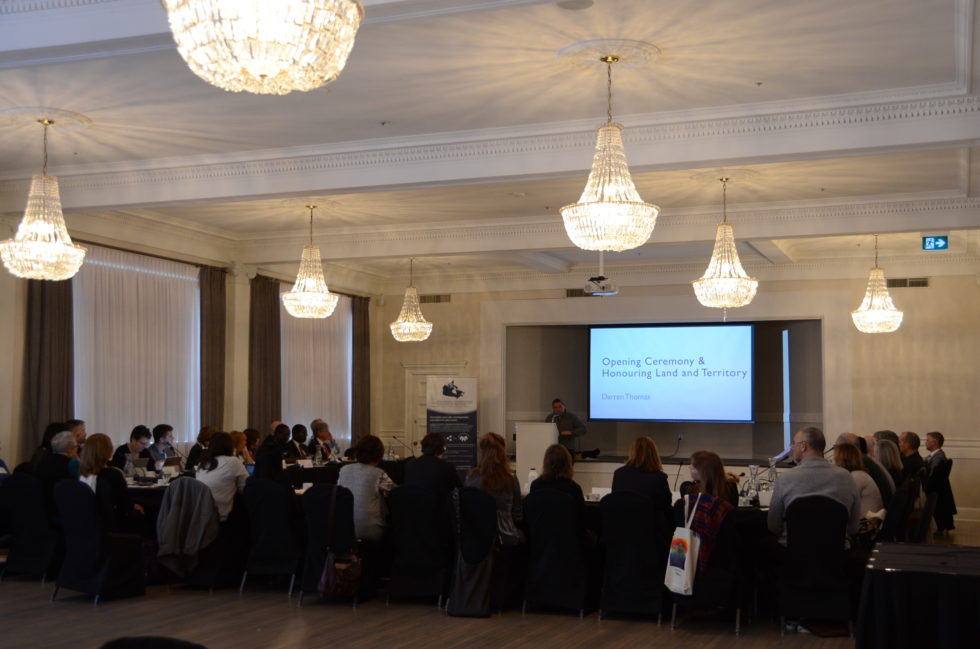
The CMNCP National Meeting was kicked off with an Indigenous Welcome & land Acknowledgement by Darren Thomas
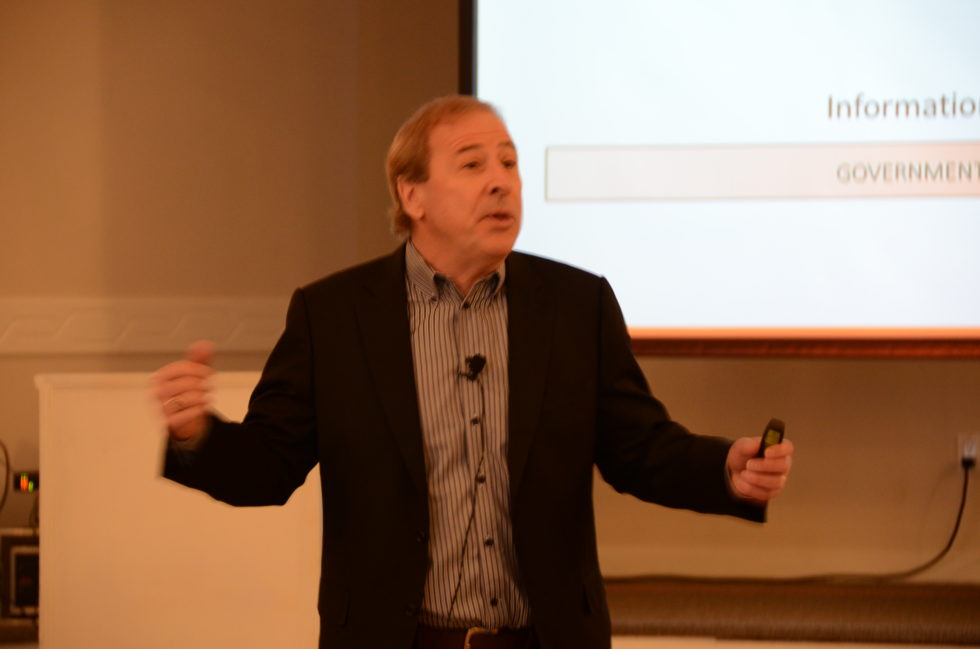
Presentation & Dialogue with Don Lenihan on Public Engagement with Government & Community
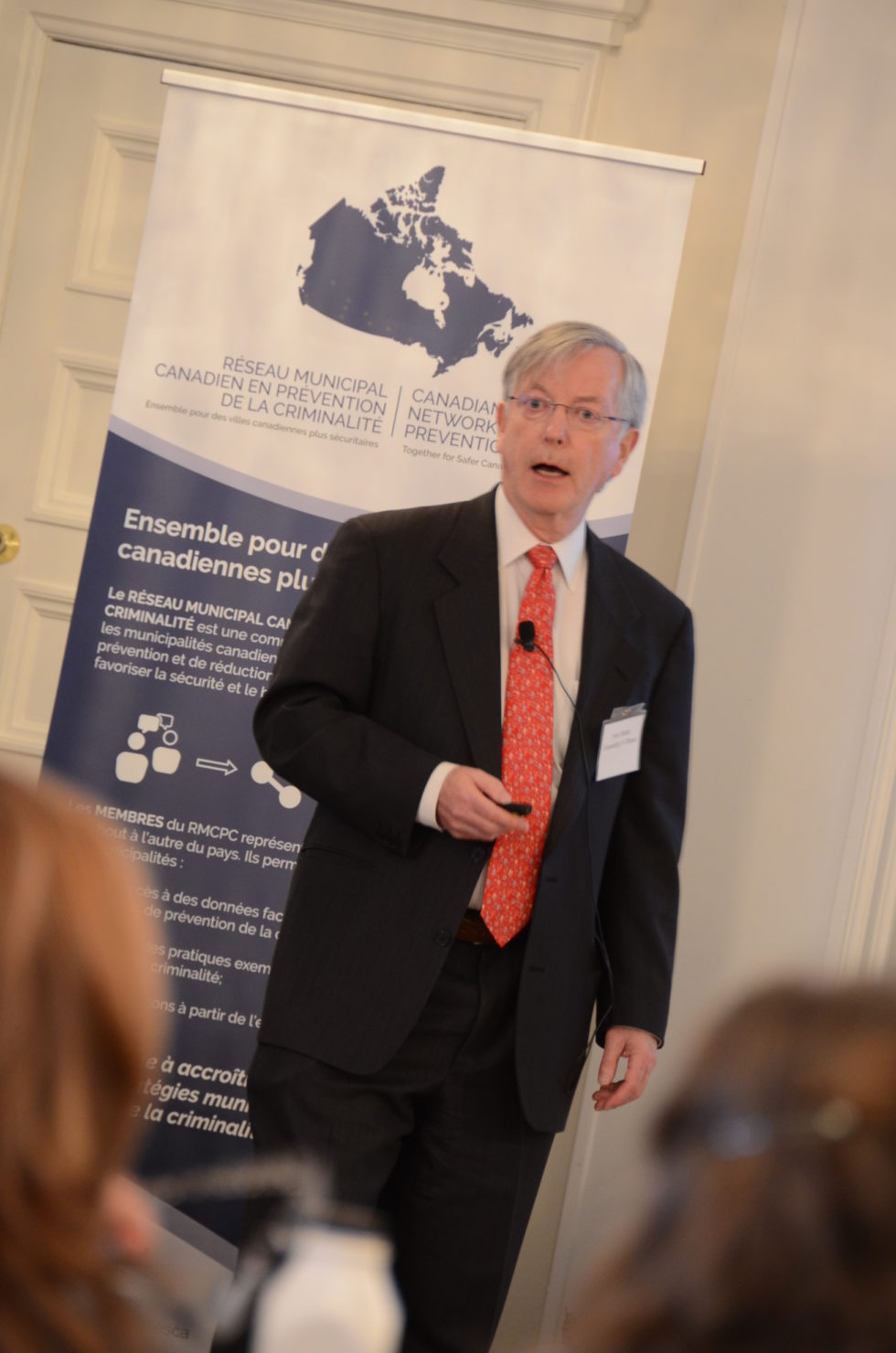
Professor Irvin Waller from the University of Ottawa speaking during the CMNCP national meeting
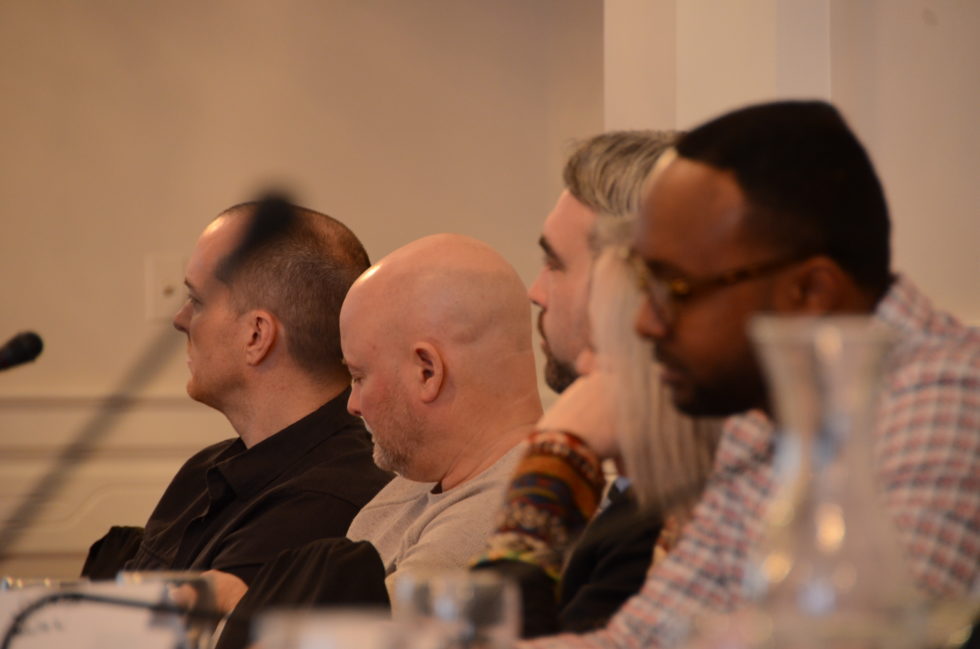
Members of the CMNCP listening intently to a presentation.
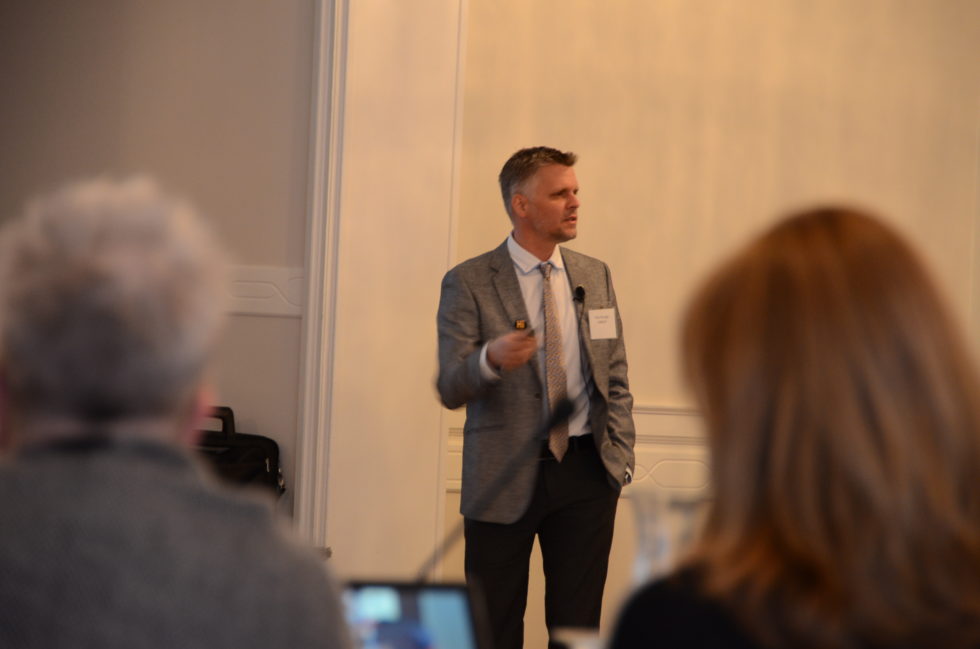
Felix Munger had the distinguished task of keeping the CMNCP proceedings on schedule!
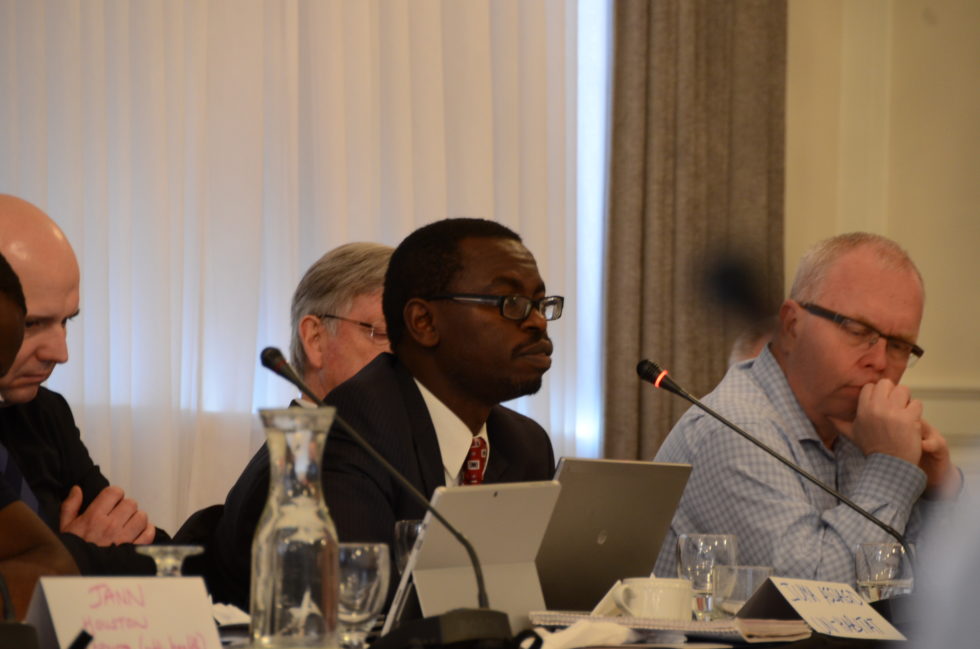
We were very pleased to host Juma Assiago from the UN- Habitat program at CMNCP. Juma supports international cities wanting to address complex crime issues through ‘safe city’ initiatives.
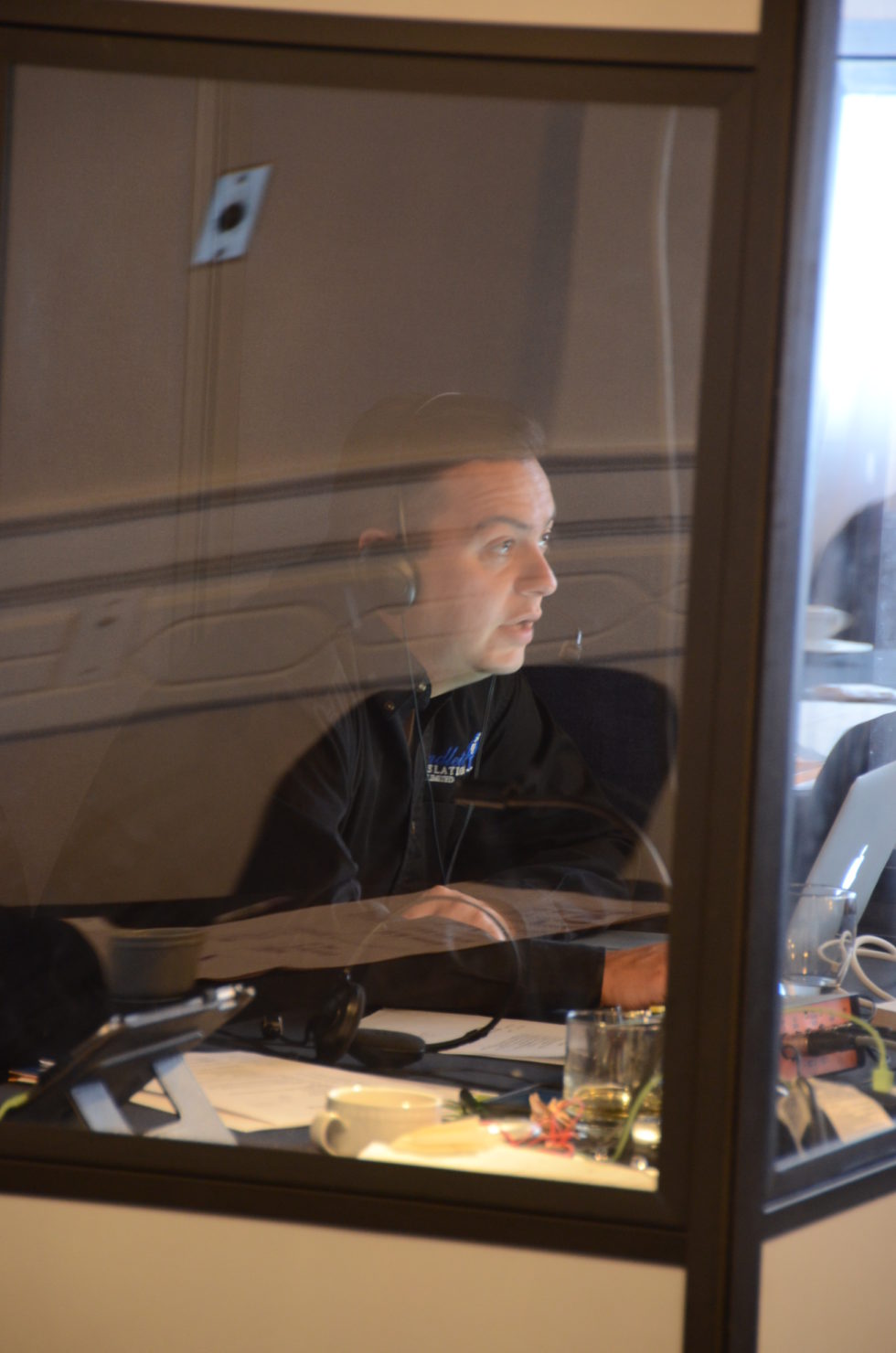
As this was a national meeting, all proceedings were delivered via simultaneous translation
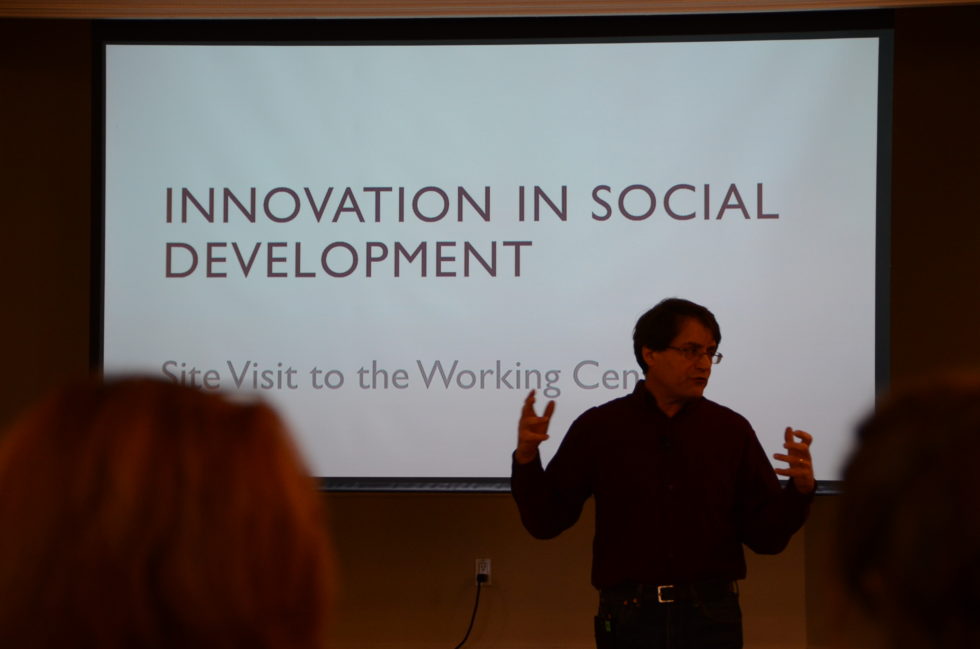
Joe Mencini from the Working Centre explaining the ins-and-outs of the community agency
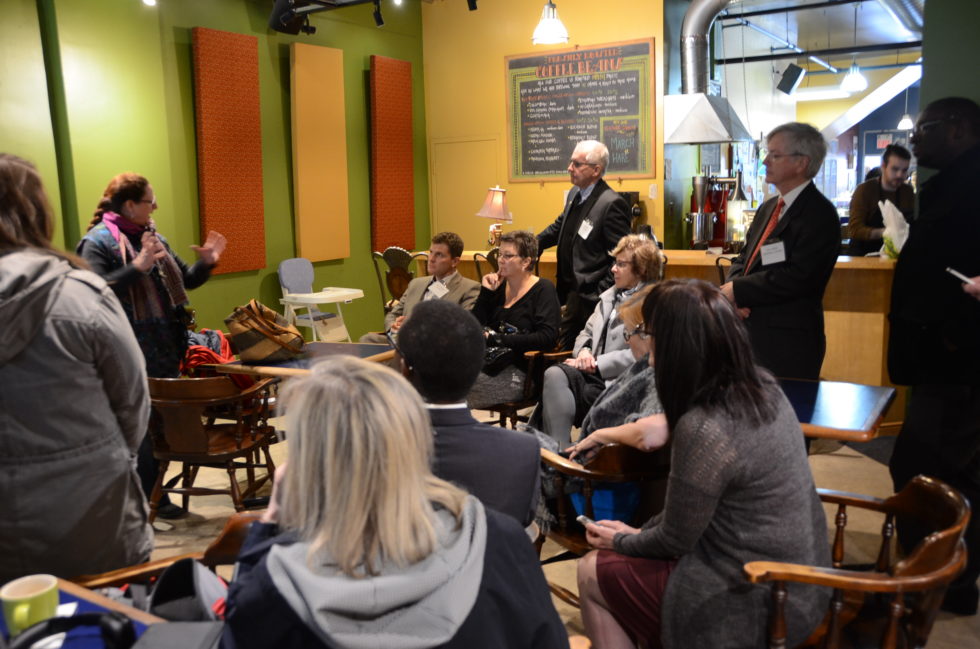
The group gets to leave the meeting table for a field trip to The Working Centre
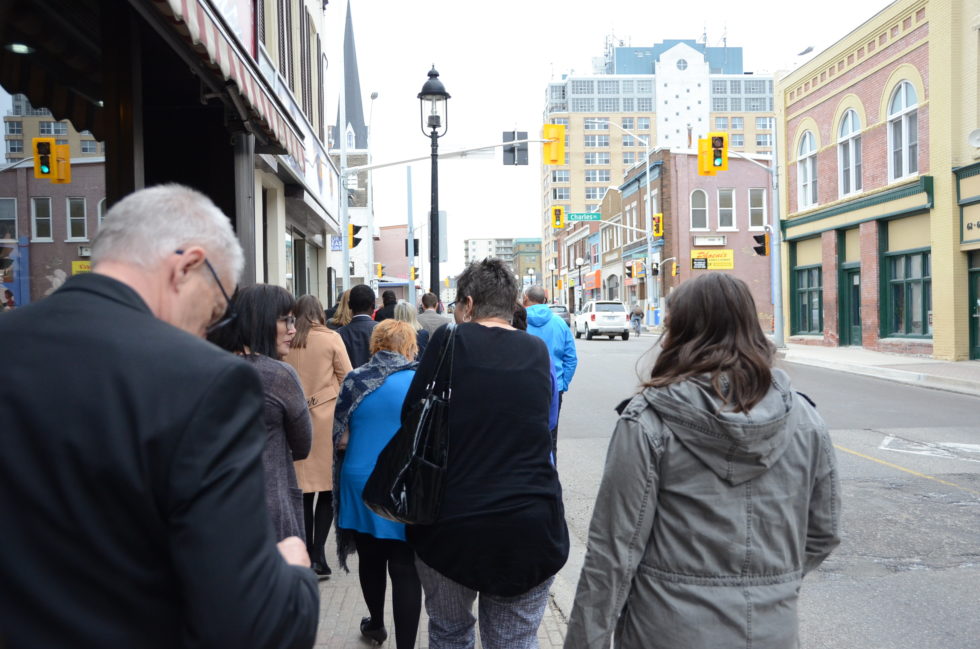
The group gets to leave the meeting table for a field trip to The Working Centre
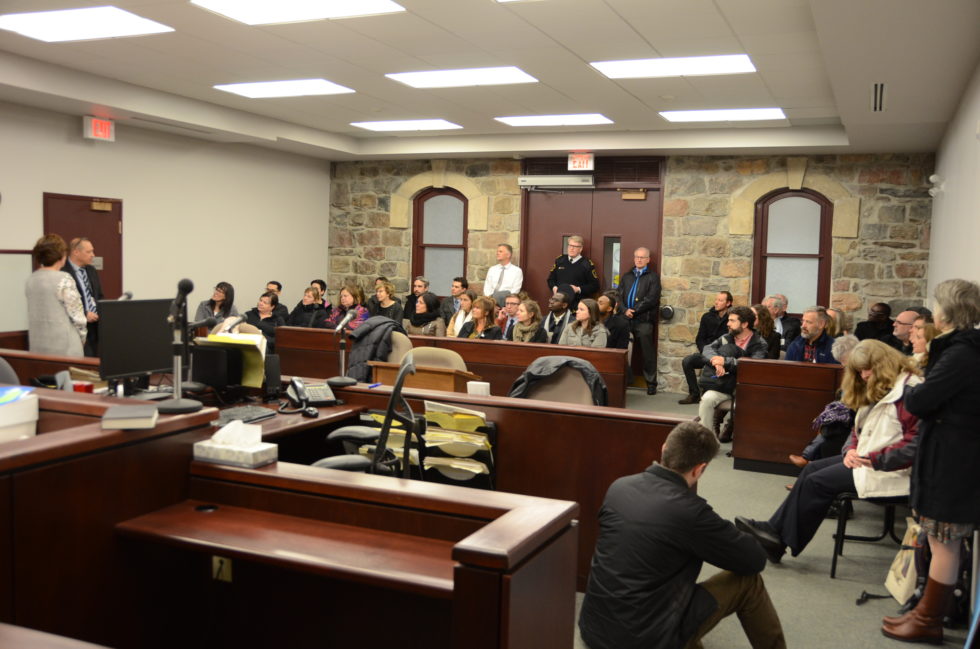
Members of the CMNCP make a visit to the WRCPC office & historic goal in downtown Kitchener
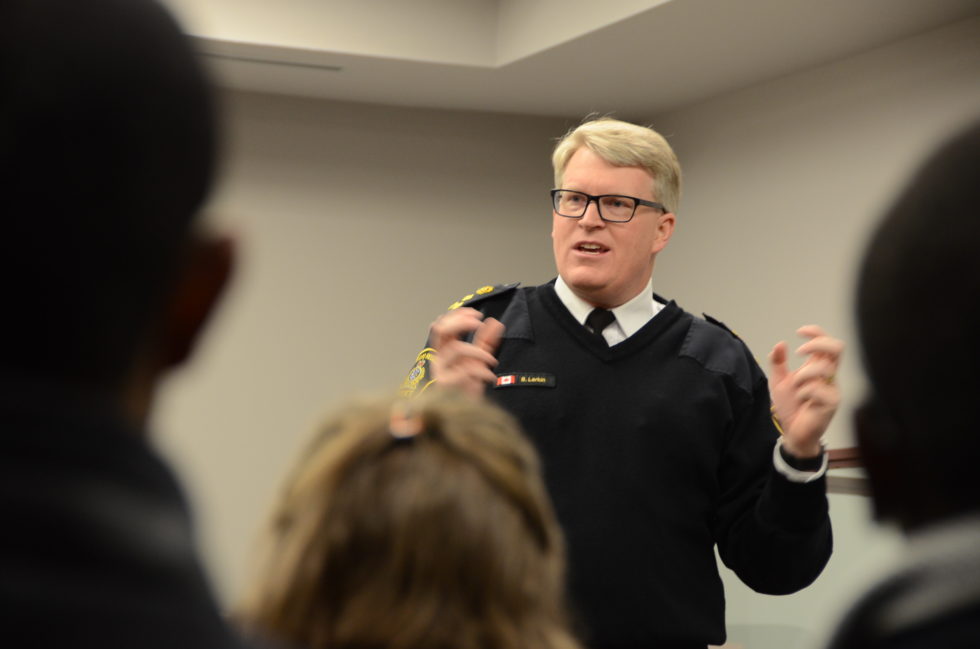
Chief Bryan Larkin of the Waterloo Region Police Services speaking at the Gaol

Regional Chair Ken Seiling was the host for the CMNCP reception held at the Waterloo
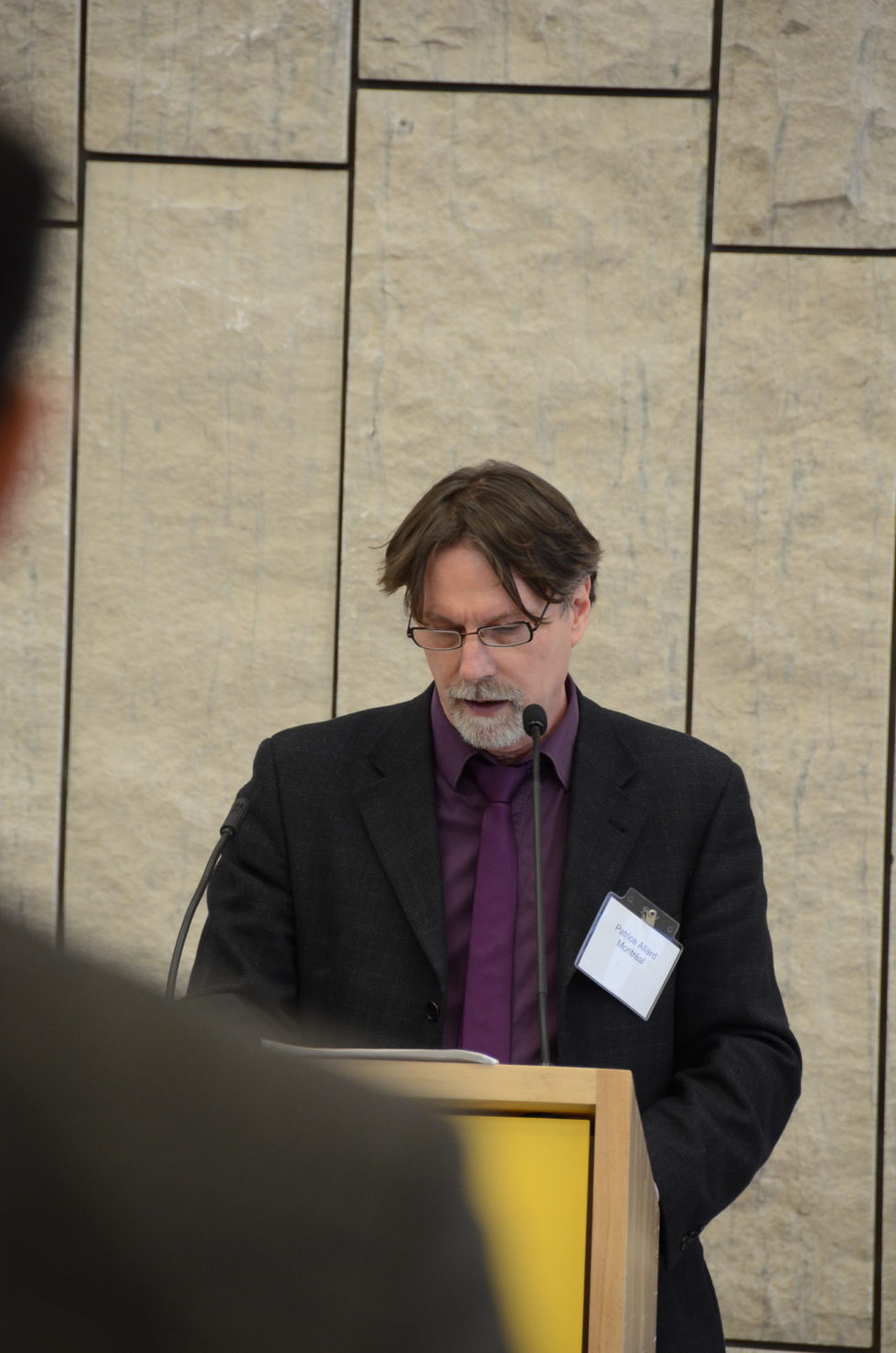
CMNCP Co-Chair Patrice Allard speaking at the reception.
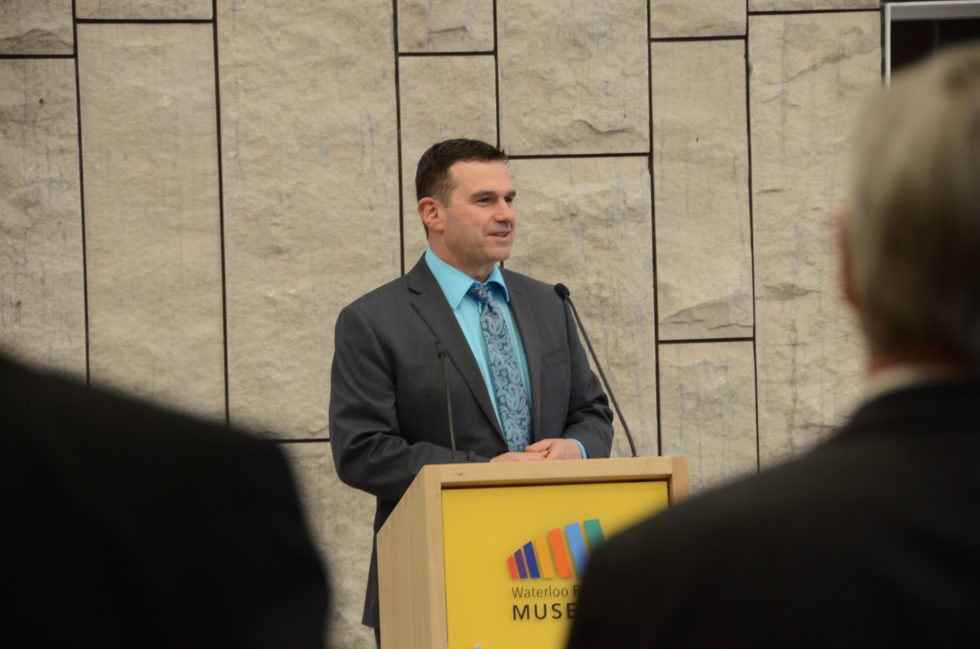
Deputy Chief Kevin Thaler of the Waterloo Region Police Services giving a speech at the reception
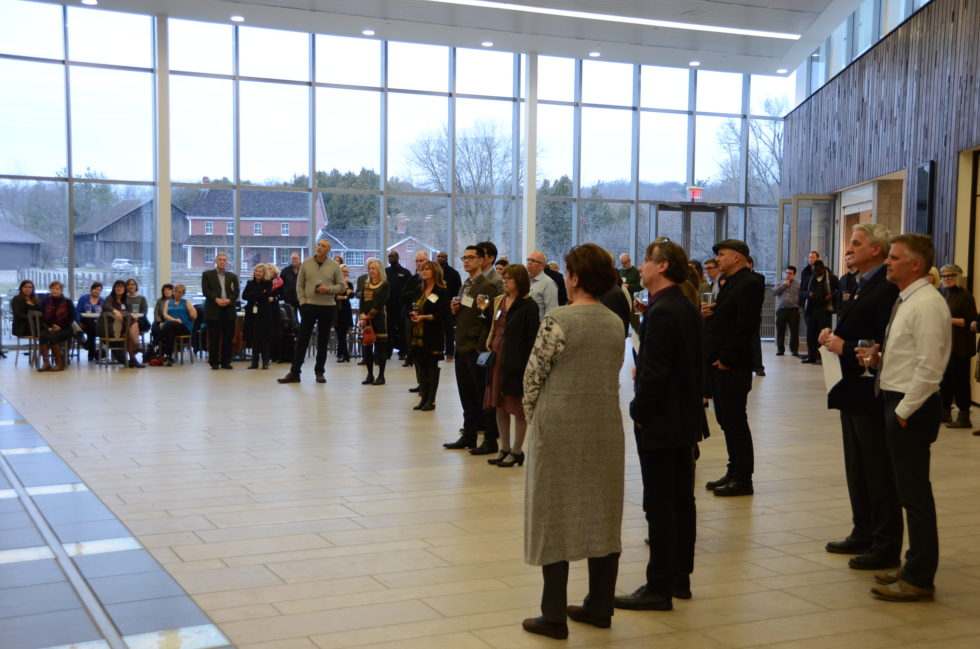
CMNCP members gather around the podium at the Waterloo Region Museum for a welcome address.
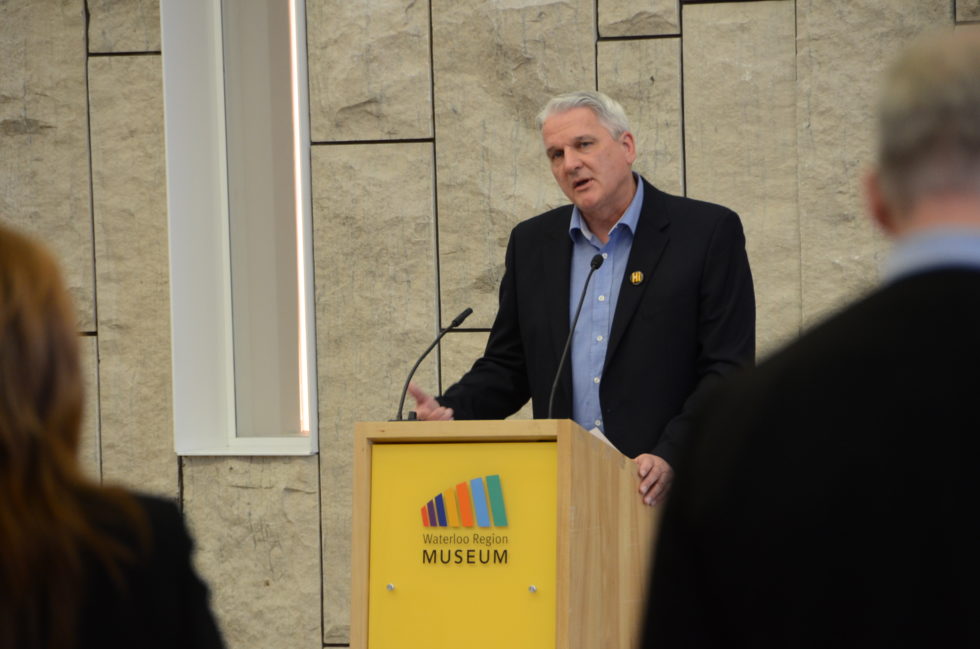
WRCPC Chair Shayne Turner speaking to the guests at the reception
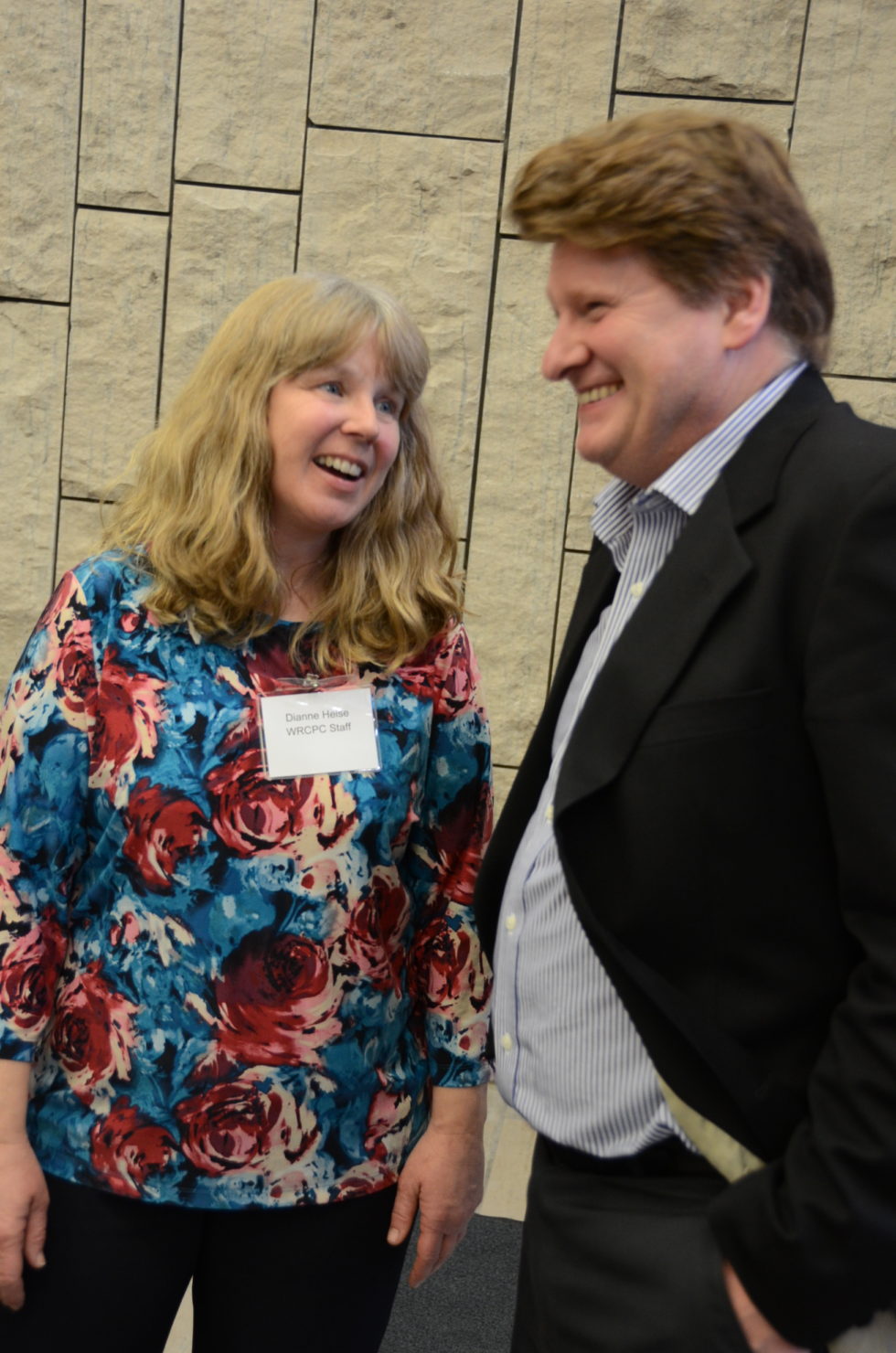
Dianne Hiese & Chris Cowie catching up at the reception
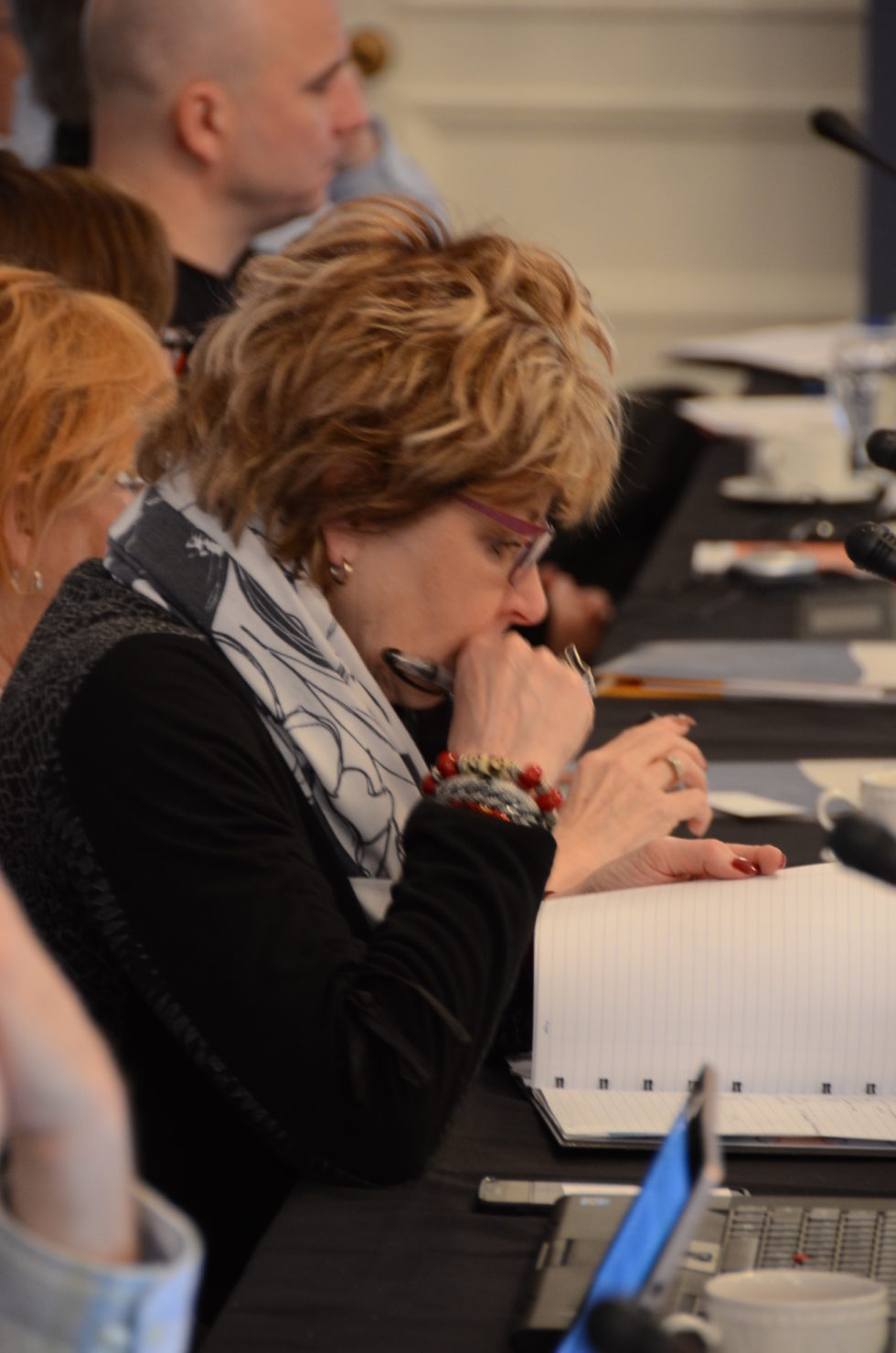
Hard at work during meeting sessions
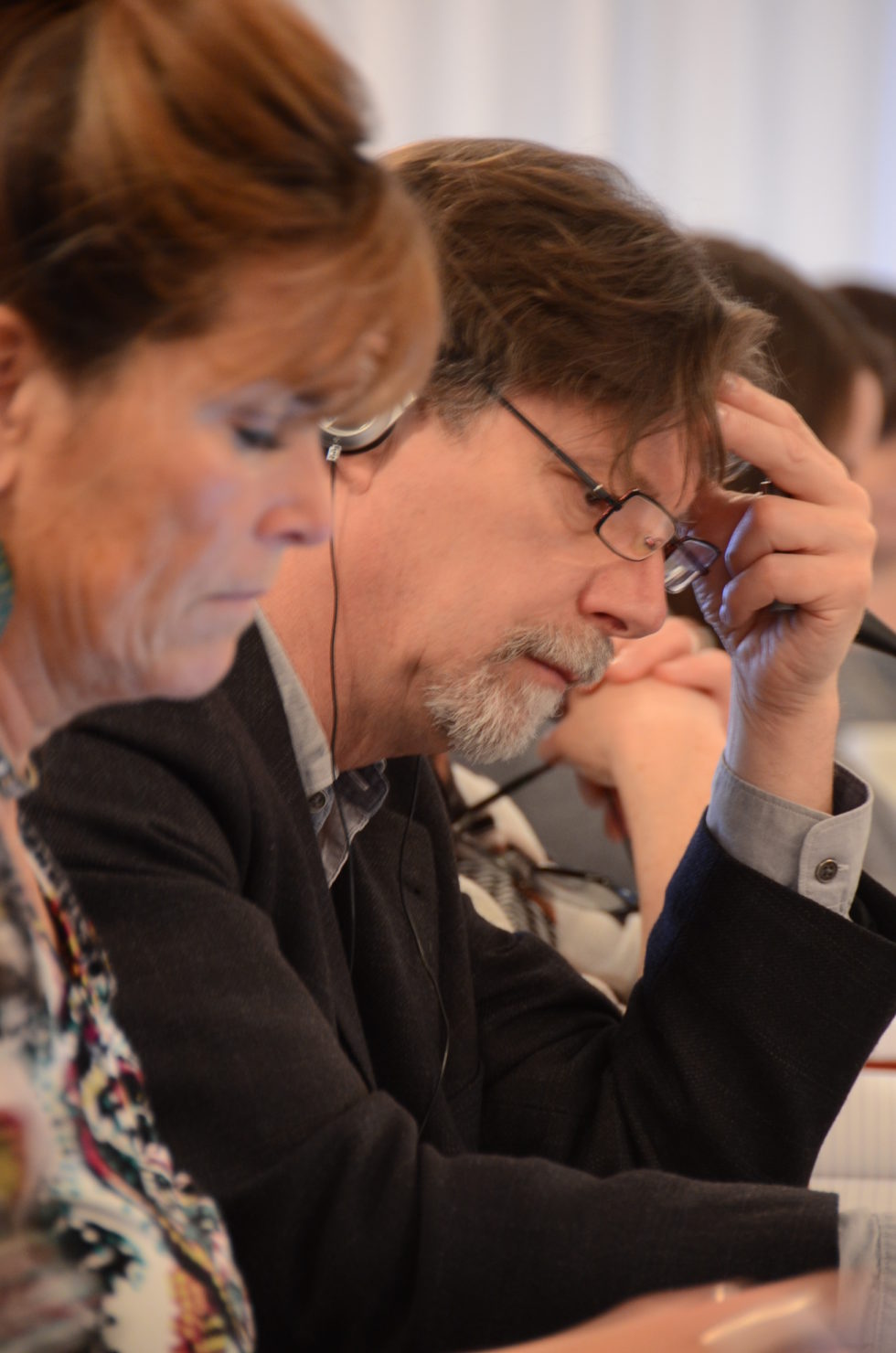
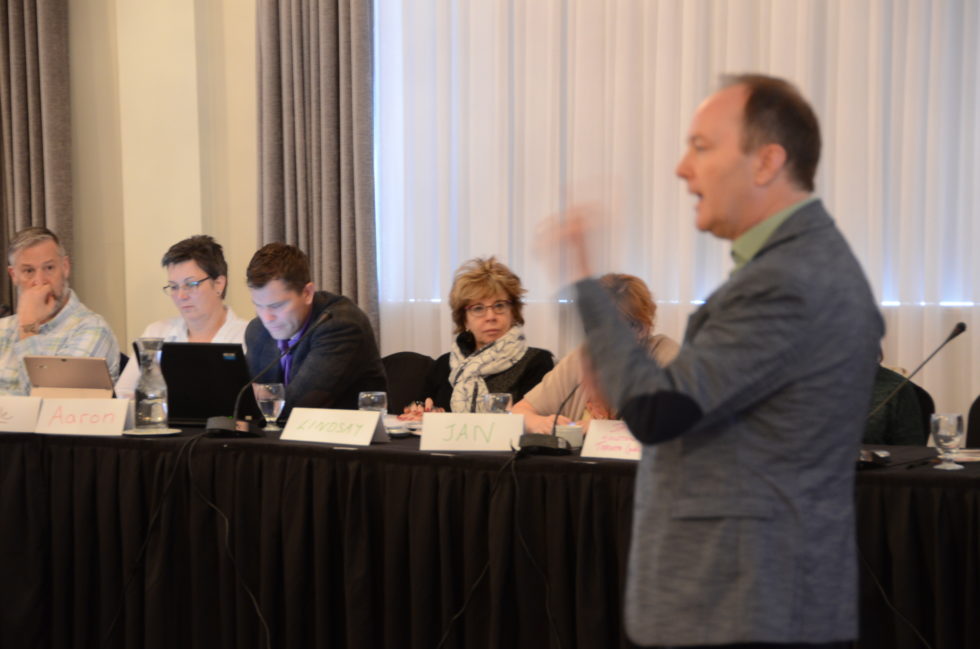
Patrick Smith delivers a presentation on the “Potential of Federated Organizations”
Posted on: November 16th, 2016 by Waterloo Region Crime Prevention Council
When you host a public book club, you just never know how things will unfold, much less when you host one with the title “Prisons, Justice and Love”! But we couldn’t have had a more engaging night if we had tried!
Friends of Crime Prevention were pleased to host the first ever “Turn the Page” Book Club with Diane Schoemperlen in November 2016. Scroll through the photos below for a short photo essay of the evening together with community partners, neighbours and Friends.
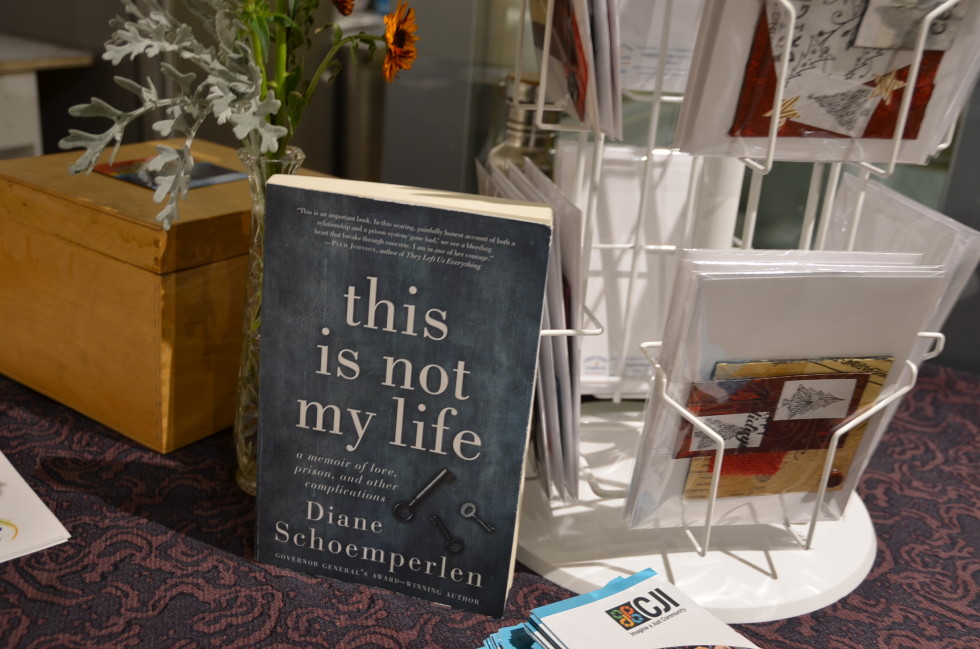
This is not my life by Diane Schoemperlen – our first book club selection for the Turn the Page Book Club focused on prisons, justice and love. A very entangled combination!
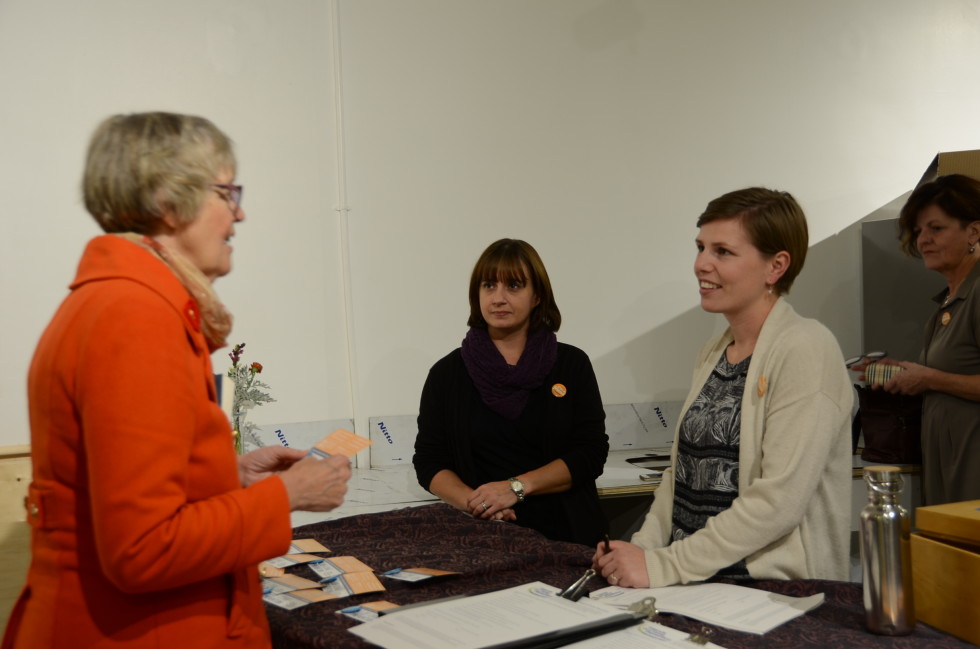
Friends of Crime Prevention, Jenn Robinson (middle) and Lisa Armstrong (right) were the most friendly greeters! Great to see so many new faces.
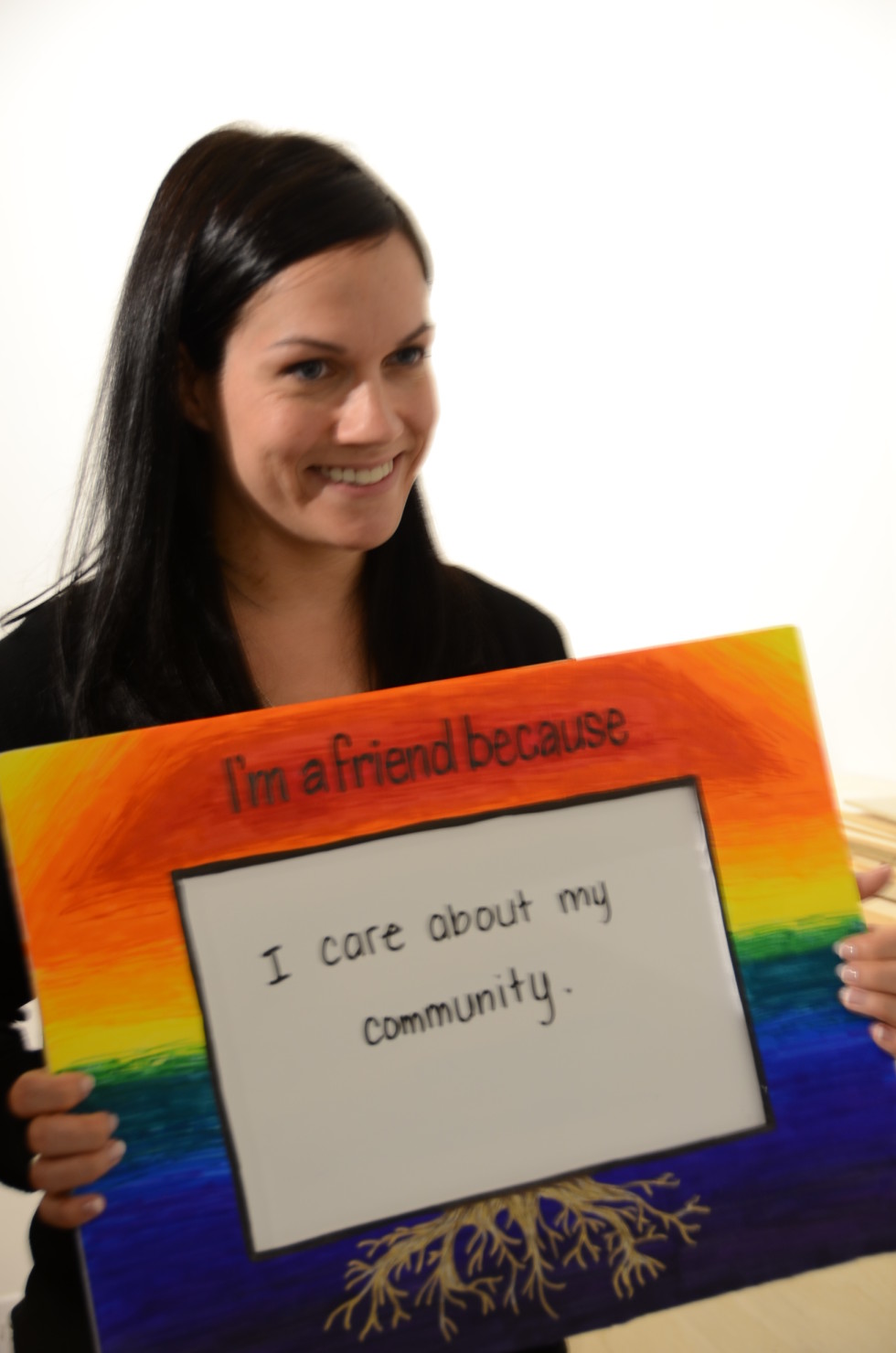
As people gathered for the evening, Friends of Crime Prevention had the opportunity to let us know why they are a Friend. Jeanean Thomas – because I care about my community
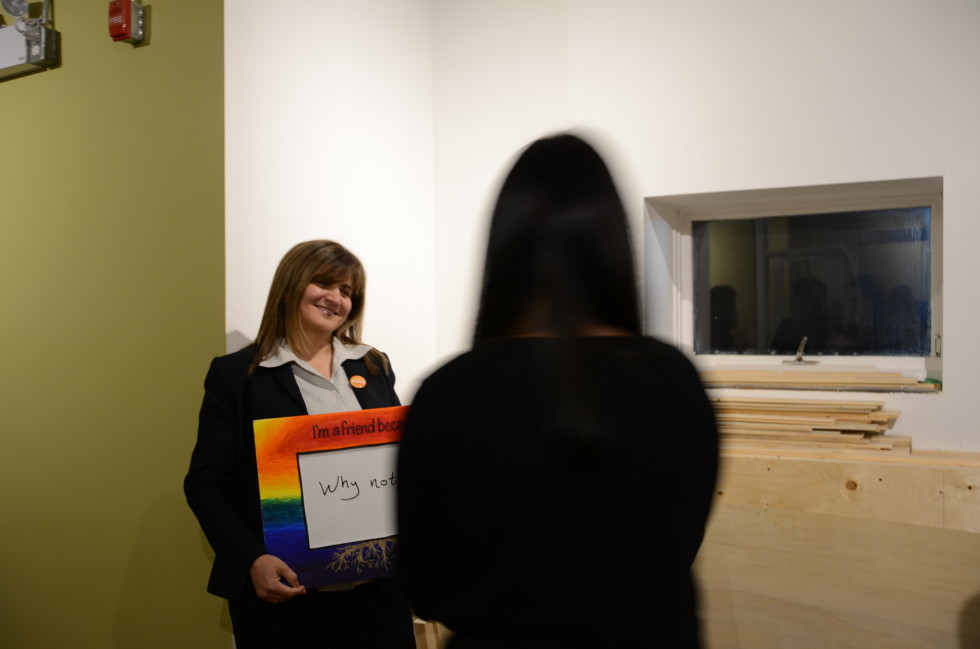
As people gathered for the evening, Friends of Crime Prevention had the opportunity to let us know why they are a Friend.
Pari Karem – Why not?!
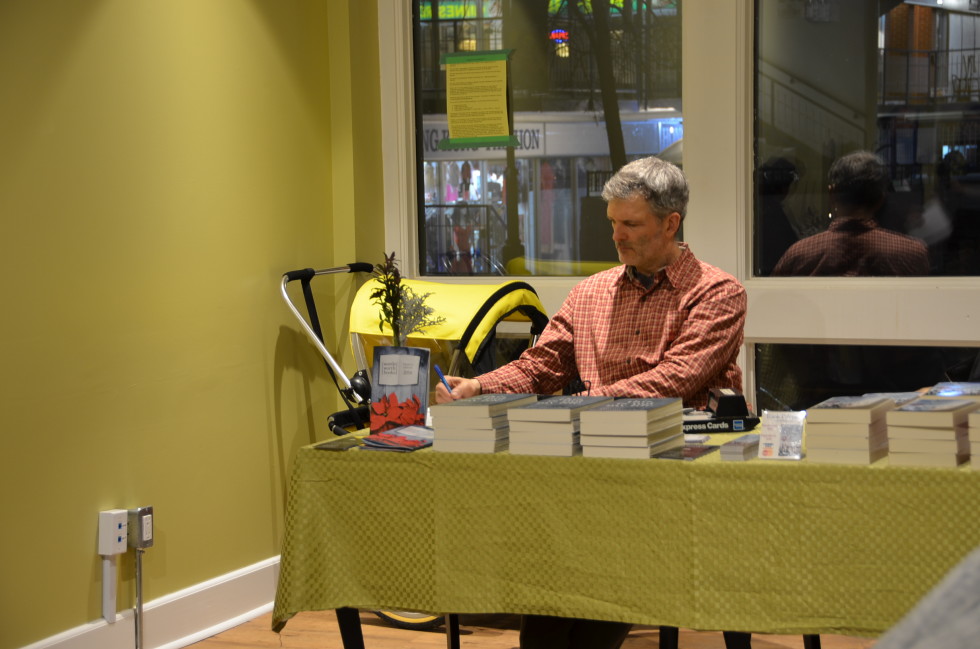
Thanks to John and Wordsworth Books for bringing extra copies of Diane’s book for sale!
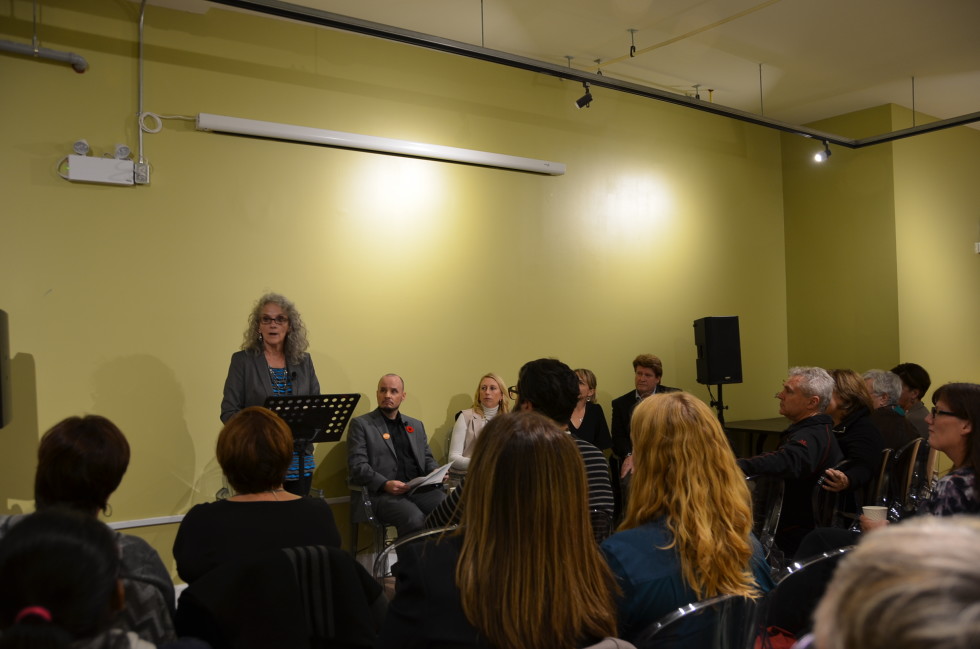
The inaugural Turn the Page Book Club was held at Fresh Ground, a new cafe & community space developed by The Working Centre.
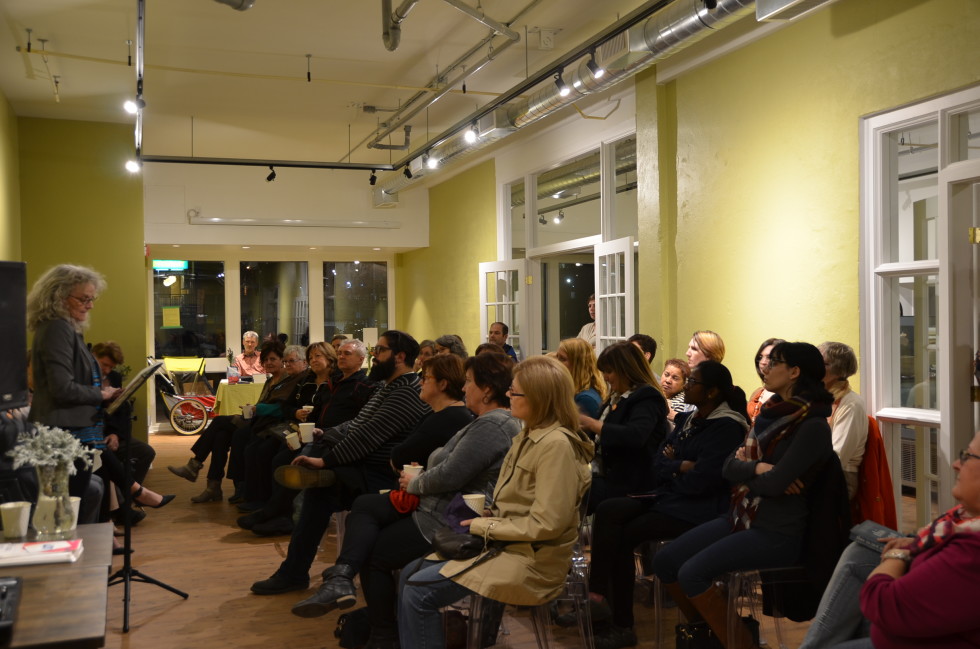
48 people gather to hear Diane read from her new book “This is Not My Life: A Memoir of Love, Prison, and other Complications.
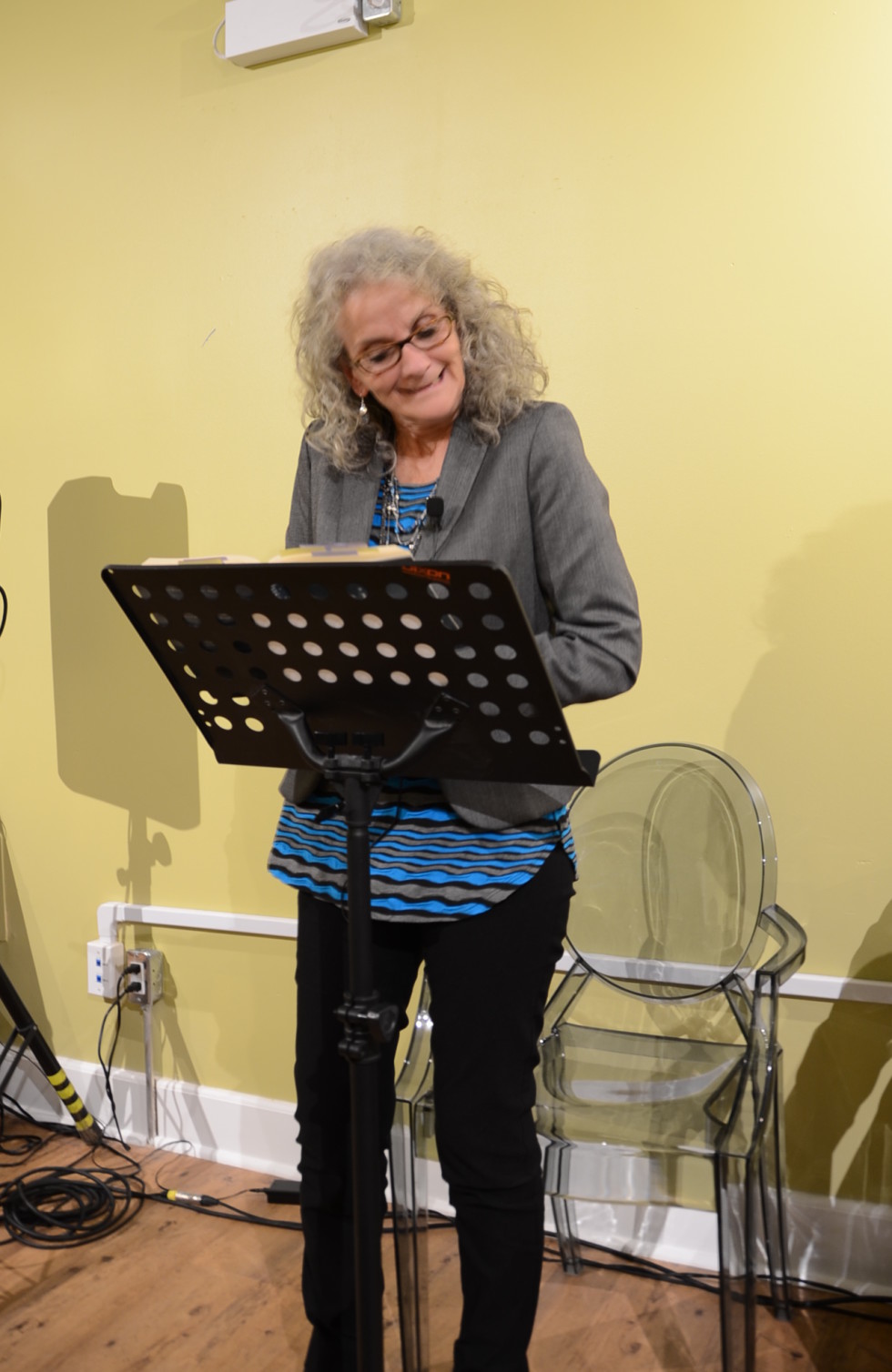
Diane reads the first line of the her book, a first line she is quite proud of! You’ll have to read the book to find out why this line still makes her laugh! Or listen to her interview with The Current on CBC Radio where the host reads it out loud.
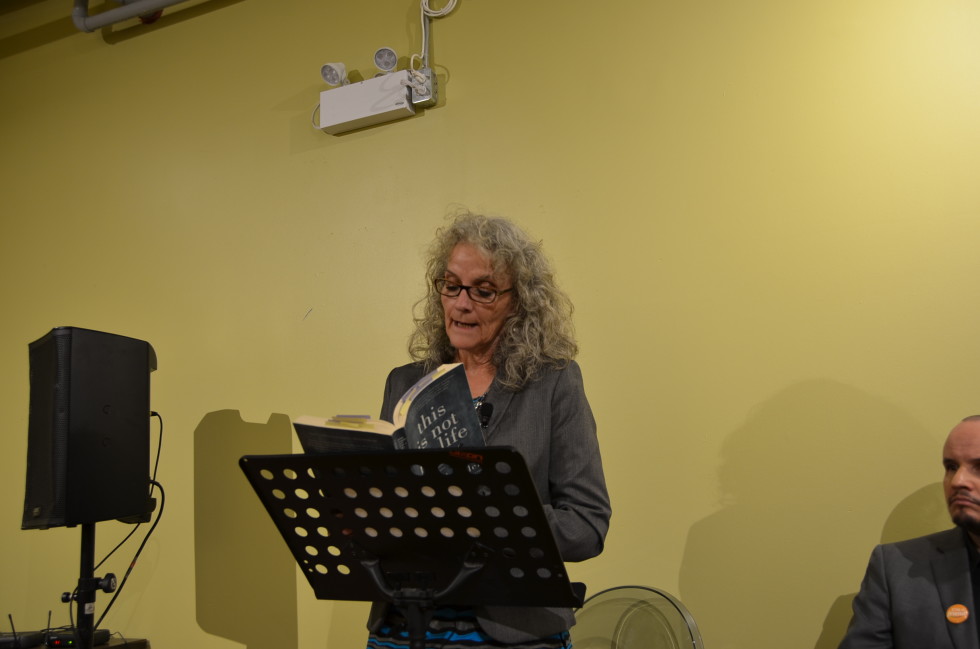
Diane reading some of the more emotionally challenging parts from her book.
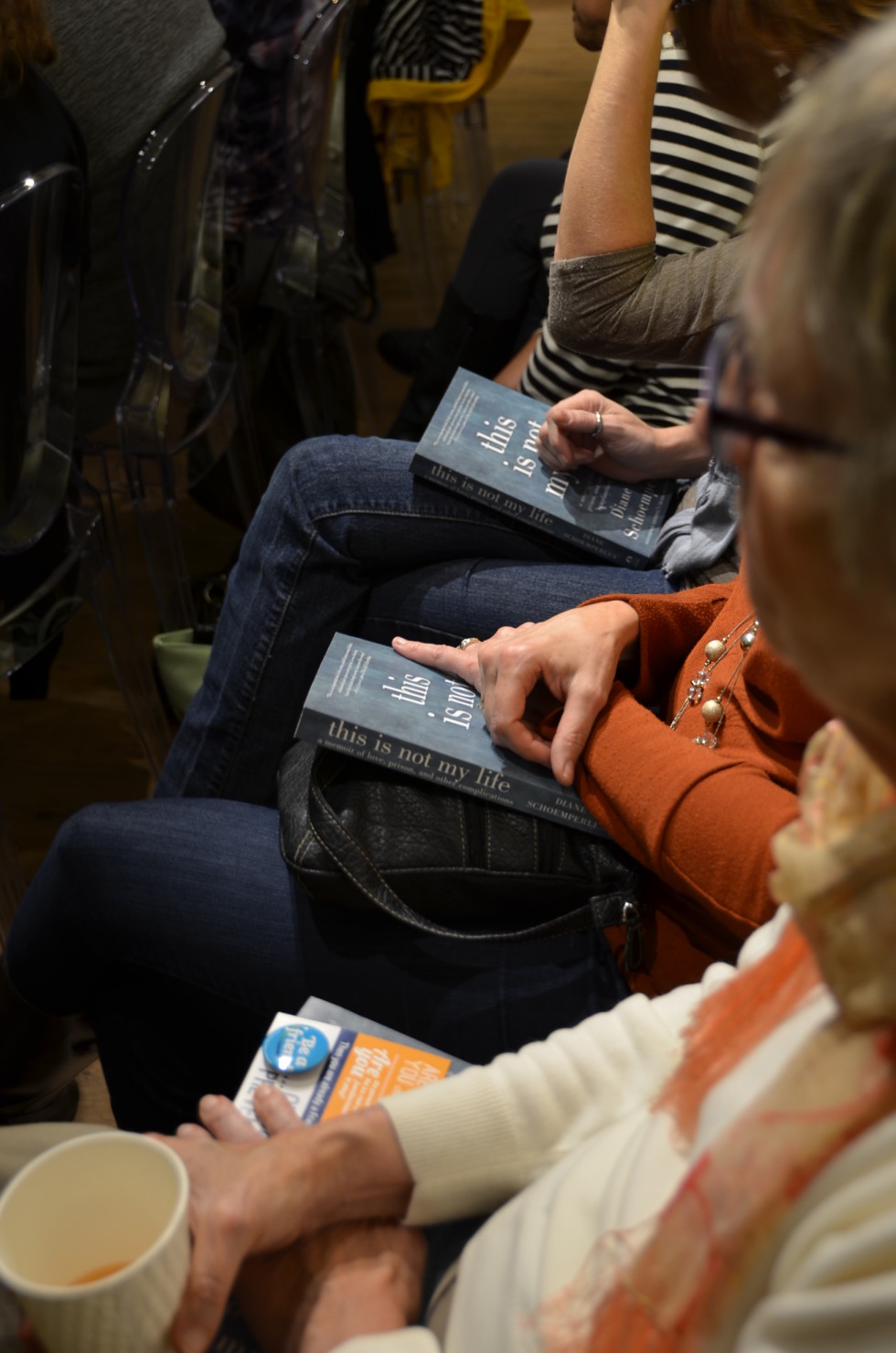
People came prepared! Many had read the book and had very insightful questions. Others came because of the topic, but bought the book by the end of the night!
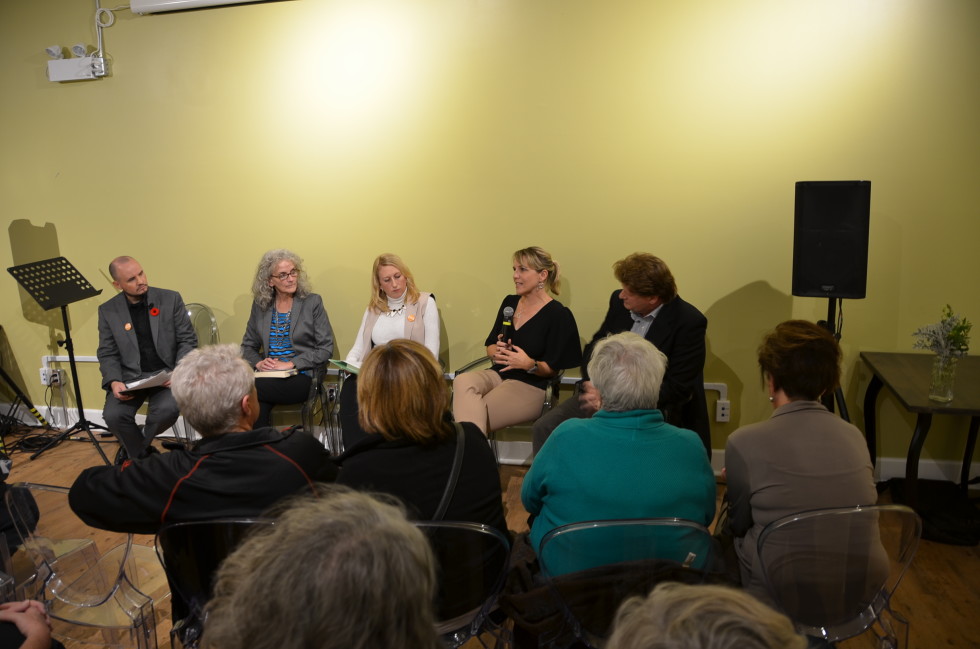
In addition to a talk and reading by Diane, we invited additional panel members from the community & beyond to complement the discussion of prisons, justice, stigma and relationships. From left: Mike Farwell, Moderator; Diane Schoemperlen, Author; Jen Hutton, Women’s Crisis Services Waterloo Region, Shannon Moroney, Author of Through the Glass; Chris Cowie, ED Community Justice Initiatives
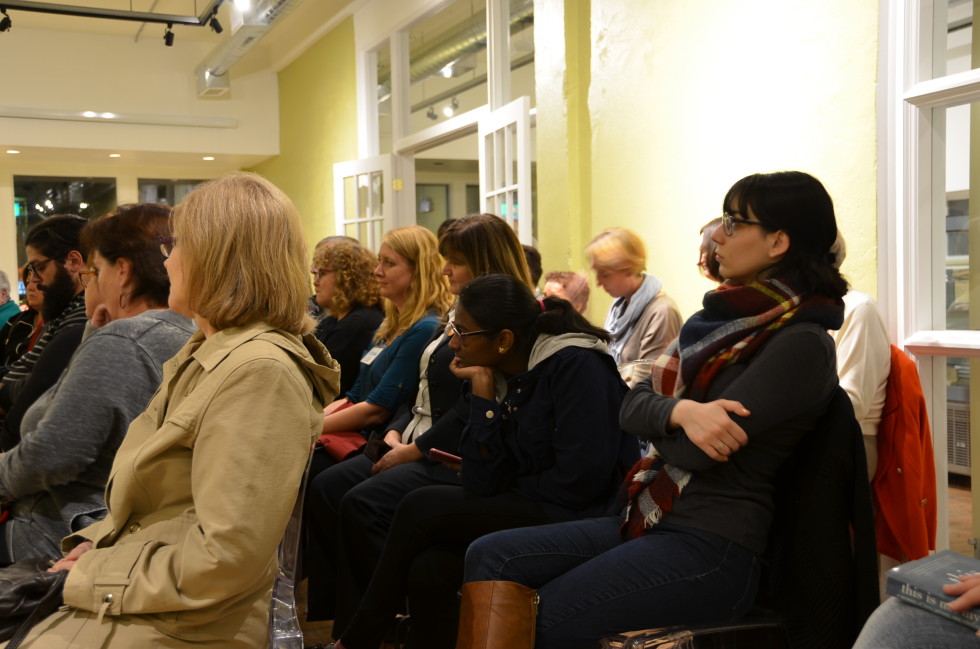
A very intent and listening audience!
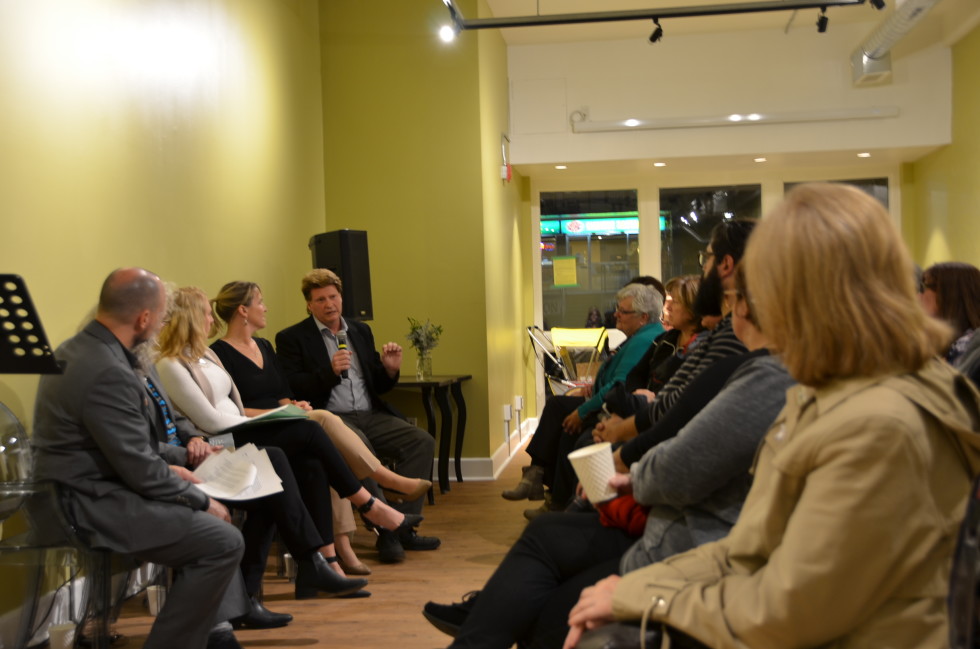
Chris Cowie from Community Justice Initiatives shared about the agency’s Restorative Justice mandate and how a more restorative process in prisons could help in countless ways i.e. better integration into society upon release, deeper understanding of the nature of offending, development of new skills to deal with conflict. Teaching and using restorative justice early can also be a prevention tool.
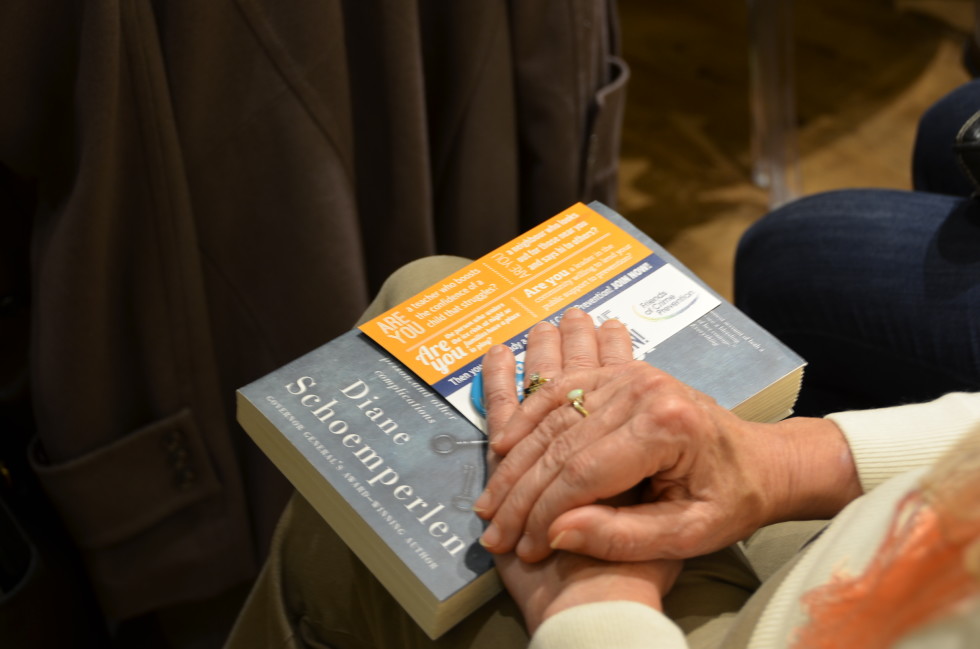
With all the new faces in the audience, it was a great opportunity for many to learn about w hat it means to be a Friend of Crime Prevention!
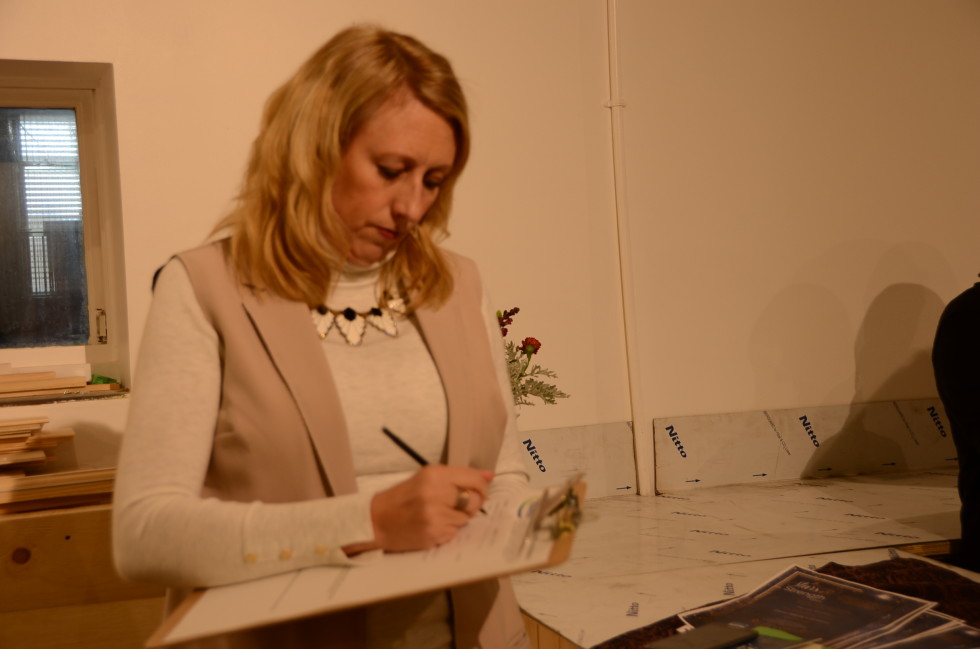
It only take a few minutes to become a Friend of Crime Prevention – just like Jen Hutton!
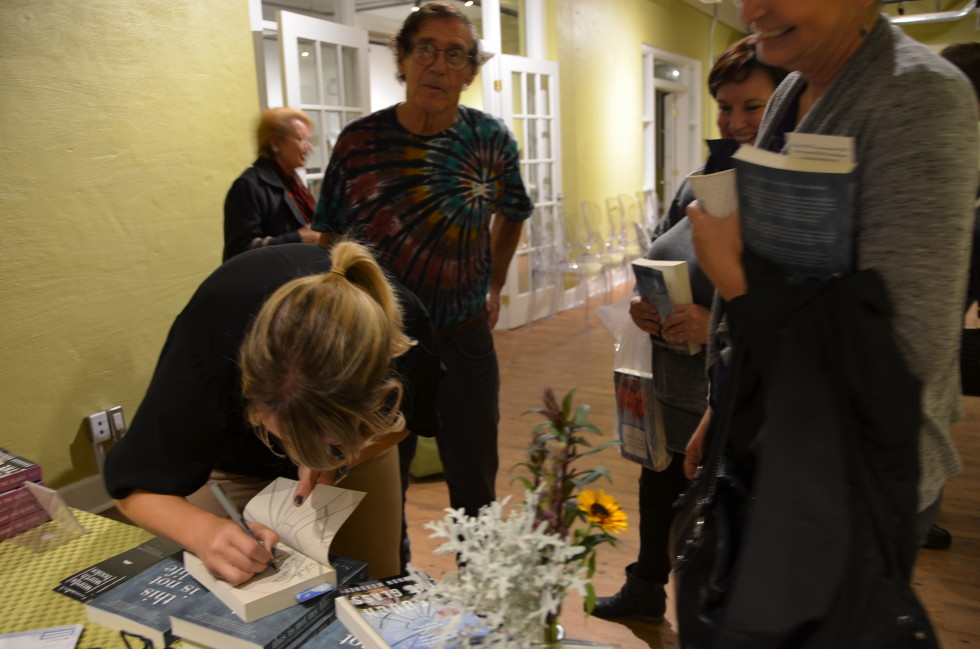
Both Diane and Shannon took time to sign books for anyone who wanted. Also a chance for great conversations.
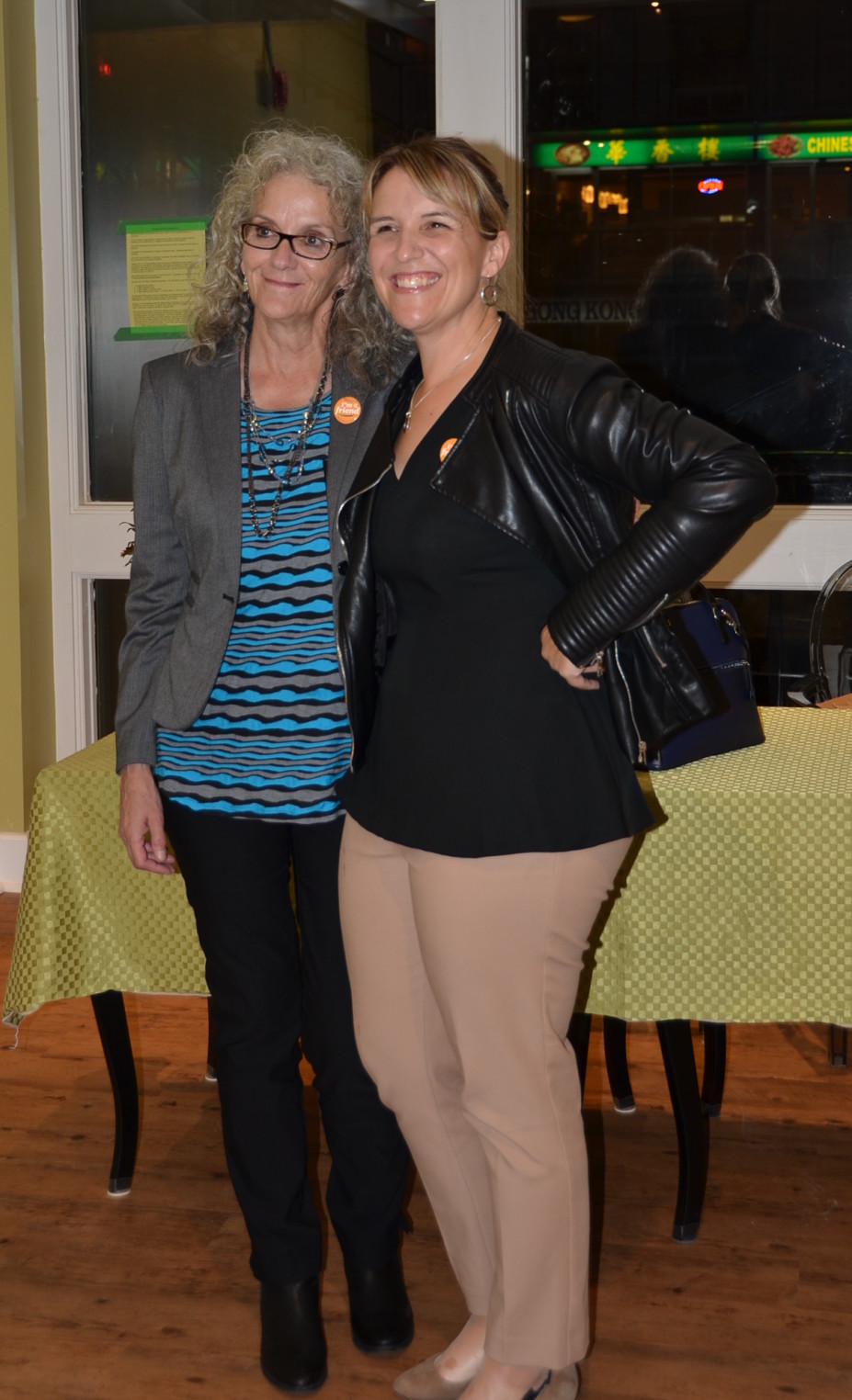
Diane and Shannon proudly display their “I am a Friend” buttons. Diane and Shannon were made honorary Friends and join Howard Sapers and Sir Neville, a guide dog, as Honorary Friends of Crime Prevention.
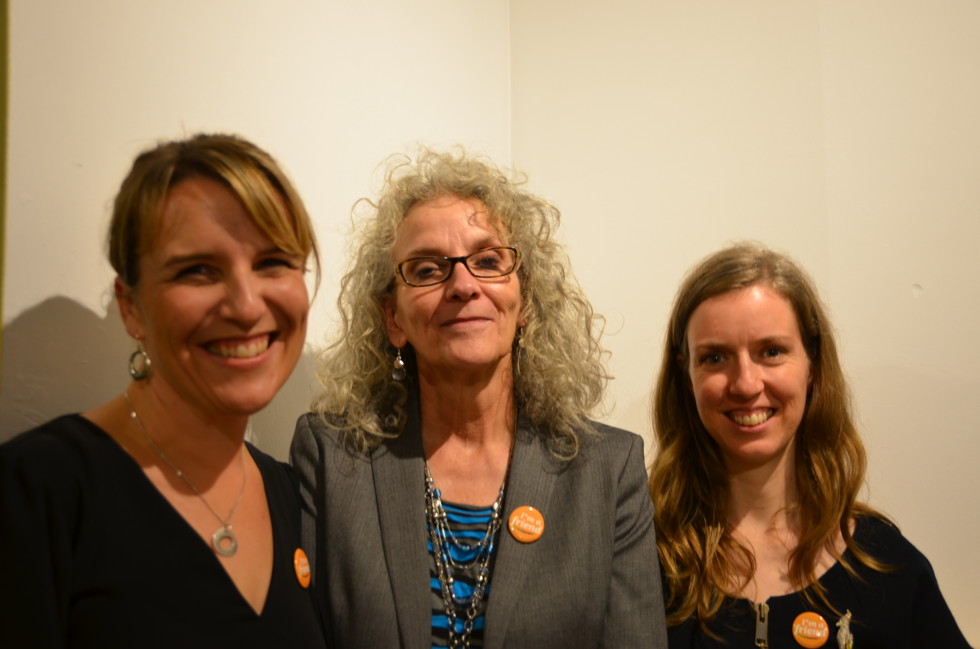
It was very special to have Shannon and Dianne together in the same evening. Shannon acted as a mentor to Diane during the writing of This is Not My Life. Shannon wrote her book Through the Glass about the life upheaval after husband confessed to the sexual assault and kidnapping of two women. Both Diane and Shannon have rich stories from which our community can learn so much! Diane and Shannon are pictured with Sarah Anderson, event organizer and facilitator from the Crime Prevention Council.
Posted on: February 25th, 2015 by Smart on Crime
That’s the response I usually get from friends and family when I tell them that I’ve spent the past two years coordinating a project to address gendered violence against university students. I generally concur with the exasperation, but am quick to point out that it seems unfair to expect to see less gendered violence on campus when relatively little has changed in how we address it on university campuses and in the surrounding communities in which university students live, work and play.
JOIN OUR 2-day Symposium
March 11th & 12th
Engage with campus and community participants on issues related to gendered violence against students in our community.
|
The Change Project, a university-community collaboration funded by Status of Women Canada and led by the Sexual Assault Support Centre of Waterloo Region has taken a long view approach to working toward safer campuses in our region. Over the past 2 years we have talked to over 650 students, staff, faculty and community stakeholders at Wilfrid Laurier University and the University of Waterloo as part of 2 separate needs assessments. The goal of this work has been to understand what our institutions of higher learning are doing well in terms of addressing gendered violence – both in its prevention and response – and what still needs to be done. Ultimately, our aim was to end gendered violence on campus through transforming the institutional and cultural climate of the universities and communities.
Both universities have remarkable capacity to address gendered violence and we have been inspired by the growing attention they have paid the issue over the course of the project. They are also aware of some of the gaps that need to be filled and have begun to demonstrate their capacity to do so in earnest.
What we have learned is that gendered violence – including sexual assault, sexual harassment, intimate partner violence, stalking, biphobia, transphobia and homophobia – is ubiquitous; that is, it happens wherever students are. For students in Waterloo Region that means they are encountering violence in their classrooms and residence buildings as well as in our community: our restaurants and bars, parks, buses, and neighbourhoods. In fact, previous research suggests that most incidents of sexual violence that students experience happen off-campus, outside of the geographic boundaries of the university. And students experience campus life socially, the social boundaries of which can extend quite deeply into our community.
I think this points to a need to look at gendered violence against students as a whole community concern. The efforts of our campuses to prevent gendered violence and support survivors will inevitably fall short if we do not start with a definition of the problem that takes the entire community as its focus and potential site of intervention. How we frame the problem will inform what happens next, who acts and how, and who is held accountable for ensuring student, and by extension community, safety. By broadening our frame of reference we also create an opportunity to draw connections between the gendered violence that is experienced by students with the violence experienced by other members of our community. I believe we can open new doors of possibility for developing truly innovative solutions to an age-old problem by connecting the capacity and knowledge that resides in the university with that of the community.
Are you interested in this topic? The Social Innovation Research Group invites you to join us for a 2-day symposium, Everyday: Freedom from Gendered Violence, March 11th and 12th to engage with campus and community participants on issues related to gendered violence against students in our community. Visit the SIRG website for more information about The Change Project.

Jay Harrison
Author: Jay Harrison is the coordinator for The Change Project at the Social Innovation Research Group. She has been working on issues related to gendered violence against students in Waterloo Region since 2005 when she was an undergraduate student at Wilfrid Laurier University. Jay works with social sector organizations in Waterloo Region and beyond to support their social change efforts through research and evaluation.
Posted on: May 14th, 2014 by Smart on Crime
The conclusion of the InREACH project has been the topic of many well-intended discussions at all levels of our community but we haven’t yet moved to the point of integrating the lessons learned to ongoing or upcoming projects.
 On Friday April 11th, the Waterloo Region Crime Prevention Council hosted “Engaging Marginalized Youth: Harnessing Experience from the InREACH Project” to provide a space for a diverse group of community members – individuals, agencies and neighbourhoods that were involved in the InREACH project – to begin moving from idea to action. Our community learned some very rich and important ‘lessons’ from the inREACH project and the gathering was intended to help the community determine “where do we go from here”. A number of promising ideas were brought to the table, but when all the focus is placed on the next steps, we have a habit of overlooking the negative and possibly dismissing the barriers that inhibit successful implementation.
On Friday April 11th, the Waterloo Region Crime Prevention Council hosted “Engaging Marginalized Youth: Harnessing Experience from the InREACH Project” to provide a space for a diverse group of community members – individuals, agencies and neighbourhoods that were involved in the InREACH project – to begin moving from idea to action. Our community learned some very rich and important ‘lessons’ from the inREACH project and the gathering was intended to help the community determine “where do we go from here”. A number of promising ideas were brought to the table, but when all the focus is placed on the next steps, we have a habit of overlooking the negative and possibly dismissing the barriers that inhibit successful implementation.
It’s easy to assume that we should apply what we’ve learned from the inREACH project to better support marginalized youth in our community. But have you every stopped to wonder, what happens if we ignore what we’ve learned? What if we shed the rose-coloured glasses and donned the shades of pessimism to see the barriers that stand in our way? What if we tried to see the glass half empty? How can we make a problem like street gangs in Waterloo Region, worse?
Well, let’s see…
- Never discuss inREACH again
- If you absolutely have to discuss inREACH, hold meetings at inaccessible locations when only few people can attend, and only invite individuals who have the power to tie up discussions with bureaucratic process
- Do NOT, under any circumstances, collaborate or foster relationships with other youth serving organizations because it just makes things messy
- Scrap the evaluation and stick it on a shelf. Treat it like it is only the opinion of the evaluator anyway and discredit it
- Speak FOR the youth; adults and service providers know best. Youth are just too young and don’t know what they want
- If anyone asks you about inREACH, only talk about the numbers – how many youth participated, how many completed, etc. Don’t tell the personal stories of change
- Cut funding for youth programs and foster competition over limited remaining resources…. Better yet, just close the services
- Ensure that the remaining youth services only exist in silos and it is really difficult for youth to access them
- Never convene collaborative opportunities for our community to talk about improving our services
- Burn the rest of the inREACH posters and brochures so the program is effectively erased from our collective memory
- Don’t recognize the contributions of all youth in our community and only hand out awards to those that excel at everything
- Use only images that stigmatize youth
- Keeping focusing on the closure of inREACH as a sign that we can do nothing more for youth
Are you getting the picture? Are you thoroughly depressed by the very thought of these ideas?
I’ve used a technique here called ‘reverse brainstorming’ (with some dramatic effect), to emphasize how ridiculous it would be if we ignored what we’ve learned from inREACH and along with it, the potential for positive change. But the important thing here is that it’s not too far fetched if we really do nothing with the gift of what we’ve learned through the inREACH project. The reality is, our region is a growing community and is very close to larger urban centres. We need to keep a focus on prevention approaches so that street gangs do not become a larger problem in our community.
In a reverse brainstorming exercise, those involved would take each spine shivering negative option and flip it to the positive. That is essentially what happened at the “Engaging Marginalized Youth” event but what to do with it? How do we bring all of these lofty suggestions and grand themes together to collaboratively apply the lessons of InREACH? What can we base our practice on?
While the community is working to shape the next phase of work work with marginalized youth, I offer this resource as food for thought. WRCPC has found the work of Tom Wolff, community psychologist, to be inspiring, grounding, and effective in establishing collaborative practice. He presents six principles of collaboration (Wolff, 2010):
- Encourage true collaboration as the form of exchange
- Engage the full diversity of the community, especially those most directly affected
- Practice democracy and promote active citizenship and empowerment
- Employ an ecological approach that builds on community strengths
- Take action by addressing issues of social change and power on the basis of a common vision
- Engage spirituality as your compass for social change
With these six principles in mind, how can we revisit the reverse brainstorming activity above and critically challenge ourselves? Are we using these principles above in our process of applying and disseminating the lessons of InREACH? We can develop our practice to include marginalized youth. inREACH showed us that. We would love to hear your suggestions and thoughts for next steps either through comments below or during future meetings.
If you’re interested in reading more about the “Engaging Marginalized Youth” event, a summary of the event discussion & next steps is available. WRCPC will do its part in continuing the discussion and they are looking to the community to take further leadership. For more information please contact the Waterloo Region Crime Prevention Council office, by email or telephone, 519.883.2306.
Author: Ryan Maharaj, MSW Student with WRCPC. Ryan recently moved to Waterloo in pursuit of his Masters in Social Work at Laurier University. Placed at the Crime Prevention Council, he has been given the opportunity to explore the role of male allies in the movement against sexual and intimate partner violence. He firmly believes that with respect, support, compassion, and education we can prevent the occurrences of sexual violence in the next generation.
Posted on: April 10th, 2014 by Smart on Crime
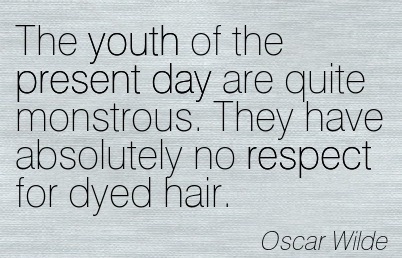
My path in crime prevention started almost 20 years ago; my formal path that is. But, even prior to that, my work with those who were marginalized and/or victimized was also “crime prevention”. I just didn’t know it then. I certainly didn’t call it that. I know better now!
Justice goes well beyond the walls of courthouses and prisons to the heart of citizen capacity and imagination. In a way, justice lives in a tension between security and democracy. Security, of course, frequently uses methods to exclude certain people from certain places. Democracy, on the other hand, can be measured by the extent of our willingness and ability to include all people. Places where everybody matters, even those, or maybe especially those, who make us somewhat uncomfortable, are something to aspire to in democracy. But measures of security will often tell us the opposite. Herein lies the rub. And it is often no more obvious than in our interventions with youth.
Throughout time youth have caused us some discomfort. Not because of whom they are, but because of the associations that have been created between youth and crime. How we treat those who are in that critical transition between childhood and adulthood is an essential measure of the character of our community. How we interact with youth, how we express ourselves to and about them, says so much about us. It may not actually have a whole lot to say about them.
“We must learn to work for young people but also with young people. Our society must learn to trust them and avoid generalizations which stigmatise them, or portray them as potential criminals. The challenge to us all is to guarantee the legitimate right to safety of each and every person without discrimination and the scapegoating of youth.” (European Forum on Urban Safety, 2000).
It is good news then that progress often seeds itself in grounds of dissonance. Discomfort can be an opportunity for growth and learning if we only allow it to be.
inREACH was a golden opportunity. It brought discomfort in so many ways that we can only be grateful. We got to test assumptions about youth generally and street gang prevention specifically. We ended up rocking our boat of easy answers.
I am no expert in crime prevention. I have searched high and low for such person and have yet to find one. I am certainly not it. There are no bumper stickers in crime prevention no matter who brings them to you (and sometimes those who bring them have formidable power). The issues of crime, youth crime and street gang related crimes are immensely complex. They defy convenient truth. Sure, it is true that there is solid evidence to suggest that some children and youth are a greater risk of coming in conflict with the law. There is also solid evidence to suggest that this can be prevented. It would therefore make a whole lot of sense that we invest more in preventing children and youth from becoming involved in crime than we do in warehousing them through their teenage and adult years. But such sustained commitment to community safety can only thrive in an environment that distinguishes facts from fiction. And few things seem to be as fraught with myth and fiction as youth crime.
And that was the whole point. inREACH was about learning what works not what we believe to work. And whenever we are on a learning path we will encounter screaming successes as much as fabulous failures. At inREACH we had to not only dispel the overused myth that connects youth and crime, we also had to dispel the myth of singular professional expertise, as well as the myth of being a community where inclusion and collaboration are always easy. We finally had to learn that outcome measures are an empty promise at the beginning of such journey.
What a gift!
And without the voices of youth and true efforts at inclusion that gift would not have been possible.
But “kids at risk” are not supposed to be engaged in shaping public policy; they are supposed to live at the fringes of the community – not on its stages. But we found that listening is a most powerful method for changing trajectories. Listening can begin to untangle the complex interplay of individual traits, family, community, and wider social supports. And when we listen we learn so much.
- We learned that risk factors do not follow a neat mathematical “1+1 = 2” formula. As much as one more risk can bring a person to the precipice of crime, so one resilience factor can stop him or her from falling off. This resiliency can be sparked by a significant adult who refuses to give up, a teacher with an eye not only to the irritating behavior but the roots of it, a school that deals with the social inclusion first and academics next, programs which assist stressed families by first and foremost meeting their essential needs of life.
- We also learned that we can ALL be essential partners in this quest for safer communities and civic vitality if we make the connection between basic needs (such as food and shelter) and meaningful engagement, sense of belonging and viewing others as opportunities not threats.
- We also learned that knee-jerk reactions, approaches rooted in fear, or a philosophy of blame are the greatest barrier to successful prevention.
In the never ending circle of seeking who is to blame we have become confused and numb to our own opportunities to be part of scripting a whole new story about us and the young people among us – ALL young people. In a way, inREACH was an opportunity to test our resolve to focus on prevention sometimes despite of it all. It was our opportunity to wiggle in discomfort as we sought out momentums for sustainable change.
The moral of the inREACH story is that no one system alone is equipped to deal with the complexity of gang related crime. We had to work in partnership. It was not a choice. Hats off to Dr. Spergel for saying all that so many years ago, long before we ever even conceived of inREACH. But “partnership” is not an old boys/girls club or tired relationship on auto pilot. Partnership is a vital agreements to work together, to share a vision, to establish a set of values, to be held collectively accountable, to disagree, and disagree some more, but to never stop moving forward together. Partnership does not end at the board room doors but rather moves us into the heart of the service we provide. That was the task we set for ourselves and it was a difficult task indeed.
The confession that easy answers are little else than a distraction from the larger social and community roots goes hand in hand with the invitations to citizens to overcome such psychology of learned helplessness. Learned helplessness is the outcome of a gradual but persistent chipping away at our collective confidence that anything can be changed let alone that we can be part of that change agenda.
Ask most people what to do about crime and at first they reach for the 911 dial. Give them the opportunity to recognize the power of everyday action and they can rally together in a way that goes beyond our wildest imaginings. The neighbourhood mobilization work of inREACH exemplified that more than anything I have ever seen. From parents to teachers to artists; when we merged the stories of those in social services with the stories of everyday citizens and those with lived experience, a comprehensive plot emerged in which truly everybody mattered.
Too often have we developed services first and the asked why. In this “we know what is best for you” mentality we often even maintain programs out of tradition, not because they worked. Such skewed problem solving is, at least in part, the outcome of organizational distance to the people we serve. inREACH youth came up very close and personal. And we were and are richer for it.
Some answers of convenience are not wrong in and off themselves. They are just wrong by way of their omissions. inREACH youth had a voice and in hearing that voice we designed an approach that was rooted in their reality even if it wasn’t always popular or comfortable. In helping them to break their silence we had to face our own fear of contempt, censure, judgement or lack of recognition. But in the words of Audre Lorde: “The fact that we are here is an attempt to break the silence and bridge some of the difference between us, for it is not differences which immobilize us but silence”.
I so look forward to tomorrow. Tomorrow is our chance, free of the confines of funding (yes there is freedom in not being funded) to again amplify the voices of those who live and lived it, and those who had the courage and wisdom to live it with them.
In the end, it is up to all of us to say: OK! We hear you! Now what?
Author: Christiane Sadeler is the Executive Director of the Waterloo Region Crime Prevention Council.
Posted on: April 7th, 2014 by Waterloo Region Crime Prevention Council
Before inREACH ended in December 2013, I shared 5 important lessons learned from the inREACH gang prevention project with the Waterloo Region Crime Prevention Council. While project funding has ended, some parts continue and there is much to be learned about addressing youth gang involvement in our community for the future. Here are some highlights.
1. What are your assumptions and values?
We need to ask ourselves this central question – what are the fundamental assumptions and beliefs we have about the young people we work with? Do we feel people are broken and need to be fixed? Or – do we believe people are full of capacities and if supported correctly, they can realize their potential? I’m not saying people don’t come with their problems, but the question is what are we focused on because that informs how you do the work. It took us a while to get this right. This idea was expressed well by a youth participant:
“It’s…for us, run by us and gonna involve all of us..What do you want to see in your community, and what are your personal talents or anything that is special to you that you want to show everybody else, and maybe those people might like it too right? So- opening new opportunities. It’s not just to keep kids off drugs but for under-privileged kids, kids who may have never had a chance to be part of something like you know…discover their love of art…so it’s giving everybody a chance to actually do…the things they want to do, so that’s why I started coming.”
This is powerful because it’s raising the bar. It’s not just getting youth out of the gang – but getting them into a job or back in school and even realizing some of their hopes and dreams. If you believe that people are full of possibilities – then the work is geared more to helping people realize that potential versus simply preventing them from doing something.
2. Gang Prevention Is:
- addressing underlying issues
- not about getting a kid to take off the bandana
We often heard – “we’ve got this kid, he’s in a gang – fix him.” So often in our case management and system navigation work, it wasn’t about getting this young person to take off his bandana or to stop hustling or whatever, we never approached the work in that fashion. But it was about the underlying issues and working on them. Mostly we were dealing with issues of poverty, untreated trauma, family breakdown, substance abuse, disengagement and lack of opportunities. These are the problems that young people and gang members and people in general are dealing with. We want to demystify that label of gang member that says their needs are different than any other groups. These same issues are the drivers behind the behaviours.
3. Gang prevention is:
- increasing engagement and inclusion
- working at individual and community levels
Young people demonstrated so clearly that they WILL engage. This matters because pro-social relationships and connections are essential for preventing youth from participating in gangs.
Unfortunately, adolescents and young adults are much less involved in community activities than other groups, particularly those experiencing marginalization due to where they live or challenges they face. Researcher Mark Totten says “there is an epidemic of social exclusion in Canada.” inREACH very successfully supported young people’s inclusion and engagement, in community centres, recreation, school, employment, services and more. This is a promising way to build assets and address risk factors in a holistic and non-stigmatizing way. However, it wasn’t just about engaging individual youth. The community was also mobilized and systems needed to make some changes in order to be more inclusive.
4. inReach is an example of an effective hub model
inReach is a comprehensive wraparound hub model demonstrating an effective way to support young people. It was comprehensive because all the right supports, services, staff and organizations were involved. It was a mobile hub which was key for meeting young people where they’re at – whether at the office, Tim Horton’s or their home. Dedicated multi-disciplinary teams brought diverse skills to the work and learned strategies and skills from each other. It was not done at a desk.
5. You Need The Right People On The Bus
You need to have the right people and organizations involved in the project and that was really key to the success of inREACH. People have to be there for the right reasons, share the same vision and be able to check their egos at the door. It can’t just be about what’s good for your own organization. Collaboration requires a thoughtful discussion before you bring people on the team. Everyone involved with inREACH was fully invested and went above and beyond because they were passionate and believed in it.
The community should be proud of all that it has accomplished.
Co-authors: Dianne Heise & Rohan Thompson – Dianne Heise is the Coordinator of Community Development and Research with the Waterloo Region Crime Prevention Council and worked with the inREACH project while she was a Master of Community Psychology student at Wilrid Laurier University. Dianne also worked on the final evaluation of the inREACH project with Dr. Mark Pancer (WLU).
Rohan Thompson was the Project Manager for the inREACH Street Gang Prevention Project (2010 – 2013). At the end of the project, Rohan returned to his role with the City of Kitchener.
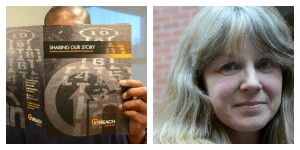
Rohan Thompson (L) and Dianne Heise (R)
Posted on: April 3rd, 2014 by Smart on Crime
Alison Neighbourhood Community Centre is neighbourhood-based organization that works with volunteers to support residents who live in the Alison Neighbourhood in East Galt, Cambridge. We support residents, families, children & youth by offering after school programs, youth drop-in programs, community events, family outreach services, and volunteer opportunities.
As a member of the Waterloo Region Crime Prevention Council and as community partners of a couple of the InReach project host sites, we were able to hear about some of the wonderful opportunities to which the youth were exposed as a result of InReach that they would not have experienced otherwise.
How InReach Resonated with the Work We Do
- We too, focus on building on strengths and capacities of young people
We have worked with youth who have great dreams and aspirations for the future, but have trouble putting their vision into a workable plan. On the other side of the coin, we have worked with youth who have little to no confidence in their abilities, thus requiring a little more encouragement and a little more trial and error in determining what really gets them motivated and excited.
In our experiences, many youth have difficulty simply picking up a new hobby as a means to divert themselves from more harmful and negative activities. Let’s say a young person decides to try something new: Inspired by an Instagram pic of a friend of a friend’s cousin rock climbing out West, Andrew decides he wants to give it a try. A few initial barriers come to mind: Other than that distant personal connection, he doesn’t know anyone else who rock climbs, he doesn’t know where he would go to rock climb, and has no idea what is needed to get started. How much is it to join? Do you need a membership? What type of equipment is needed? Does that cost more money? The idea is now overwhelming. For a youth who has not had many life experiences nor opportunities, it is likely that these questions wouldn’t even be on their radar. It is much easier to continue along their existing path, wherever it may lead.
In our experience, the recipe for youth engagement is as follows:
- Exposure to a new activity must take place in an accessible space where youth feel safe, where they won’t feel like they are being judged and feel comfortable to try, fail, and then try again
- In order for this to happen, relationships must be built with program staff. And in order for this to happen, staff must be skilled in outreach and community development practices so that they can effectively meet the youth where they are at before they will even walk through your door
- Youth need to be involved in the planning process and have input and control over what happens next
- It takes time, commitment to seeing the initiative through, trial and error, one-to-one support, and constant encouragement to ensure that youth are getting the most out of the program.
Bottom Line: You cannot expect certain youth to simply sign up for an activity, attend regularly, and thrive without support, a trusting relationship and input into the program’s design and execution.
- We have learned to adapt to the growing complexity of the needs and issues of youth
We offer programming for youth under the guise of recreation. When I first started working in the field, I had a very pretty picture in my mind about what the harmonious world of recreation should look like: Mom or Dad would drop off their kid for our program, (on time), sign-in would be completed in an orderly and organized fashion, and we would all participate in an rousing round of basketball. At programs end, the youth would depart safely for the evening and everyone would be so happy. I hope you can smell the sarcasm here, because this picture couldn’t be any further from our reality. On paper, we offer programs such as Teen Night, Basketball, Girls Night, etc. In reality, we offer mentorship, leadership development opportunities, a place to belong and be heard, support and guidance, a respite from family and relationship trauma, something to eat, relief from the stresses of coping with depression and anxiety, an escape from the pain and constant disappointment of poverty, an opportunity to practice speaking English, access to individualized supports such as counselling, emergency food sources, career resources, addictions supports, relationship and grief therapies, and the list goes on and on. Ultimately, by the time we have a chance to check in and talk to everyone who was fortunate enough to even arrive to the program, there often isn’t time to play basketball.
- We need help keeping programs like these going so that we can reach more youth
Just because the InReach project is now “complete” doesn’t mean that there still isn’t more work to do. With as many partners, staff, support agencies and youth impacted by InReach, I hope that the trajectory of this valuable project will not be lost and its lessons forgotten. The truth is, there are thousands of youth living in the Waterloo Region that could really benefit from a community treatment team; a one-stop-shop where youth can access support to face a combination of issues (see above) unique to only them, right in their own neighbourhoods. Effectively addressing these issues takes partnerships, patience, commitment, resources- all things that that the InReach project so successfully exemplified.

Author: Courtney Didier is the Executive Director of Alison Neighbourhood Community Centre in Cambridge. She is very passionate about creating sense of community and inclusion, not only in her neighbourhood, but across the Waterloo Region. Courtney is expecting her first child any day now!
Posted on: April 2nd, 2014 by Smart on Crime
Being an avid hockey fan, I await the joys of the upcoming Stanley Cup playoff run. But with this expect many interviews, with standardized questions with the same responses from each player. The questions never change based on a given answer, and the answers never change from game to game, and year to year for that matter. They are all cliché based interviews. How is this relevant to inREACH?
Having been with inREACH, it became quite evident, that the youth we worked with often experienced clichés in their lives. They were labelled, stereotyped, and their behaviours were often predicted by the adult world around them, yet most of the time no one knew anything about them. Outside of where they lived, or who they hung out with, or the school they went to, or perhaps what they look like, do many even know these youth? The label which is the umbrella they live under is their cliché.
While working with inREACH, the approach we used broke down these barriers, the labels, the assumptions. That is what worked. Did we listen to them? No; we heard them. We can use our own clichés about giving hope, opportunity, a chance, but it only works if we know what to give. That was done by hearing their story. Their story does not have to be a given. It is not just about where they have come from, and what they are going through, it is also about where they want to go. If we hear them, we can help them. inREACH worked because no assumptions were made. Each youth had their own “Stanley Cup” they wanted to lift, but the battle to get there was the unknown. After each session or meeting with a youth, there were no cliché answers or questions. There was the concept of acknowledgement of ability, an identification of assets, and no reason to suggest why that youth could not raise that cup, whatever that cup was from him or her.
There was a time where we were asked to do a presentation on working with high risk youth on behalf of a community agency, and the reason for such information was the staff was stressed due to not feeling successful in working with this population. Initial feedback as to why the training was needed was the youth do not listen; they are always angry, disrespectful etc. Perhaps part of the issue is as adults, we make assumptions of where these youth have come from. This was a huge learning curve I believe many of us have yet to master.
Recently I watched the film “Short Term 12”, about youth in a group home, and a new staff member in the film was asked to say a few words to introduce himself to the group. His response was: “I always wanted to work with under privileged youth”. That comment didn’t go over very well. My first reaction was shock really, as the moment the categorization of ‘under privileged’ was used, any potential trust is already gone (as the youth were not too happy). The scene reminds me so much of what inREACH was about. Youth are…really….just youth. No adjective required. And really, I do think that is what is being missed. That point was driven home while with inREACH.
Often, we as adults rely on labels, as they are easy to work with clichés that fit into a nice little box for the ease of comfort.
In my continued work, I think it is of the upmost importance to truly find out what the youth needs, or wants, and feels. To reflect on what the youths’ words are, shows they have been respected, and valued, and heard. That is the start of their quest for their Stanley Cup.
Moving forward, what is my message? I won’t give any clichés here that you will assume I should be making now. What I will say, is do you know the path I took as a youth to get to where I am right now (working in social services for 14 years)? I will bet most likely not. I was a youth. We all were. That is the cliché I will end off on!
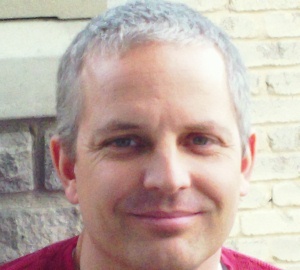 Author: Karl Garner I was a Case Manager at inREACH a focus on employment for the youth. I am currently working at John Howard Society with the Youth in Transition Program, a program for Crown Wards. And want to know a fun fact…? I still play my major passion every week…HOCKEY!
Author: Karl Garner I was a Case Manager at inREACH a focus on employment for the youth. I am currently working at John Howard Society with the Youth in Transition Program, a program for Crown Wards. And want to know a fun fact…? I still play my major passion every week…HOCKEY!












































 On Friday April 11th, the Waterloo Region Crime Prevention Council hosted “Engaging Marginalized Youth: Harnessing Experience from the InREACH Project” to provide a space for a diverse group of community members – individuals, agencies and neighbourhoods that were involved in the InREACH project – to begin moving from idea to action. Our community learned some very
On Friday April 11th, the Waterloo Region Crime Prevention Council hosted “Engaging Marginalized Youth: Harnessing Experience from the InREACH Project” to provide a space for a diverse group of community members – individuals, agencies and neighbourhoods that were involved in the InREACH project – to begin moving from idea to action. Our community learned some very 


 Author: Karl Garner I was a Case Manager at inREACH a focus on employment for the youth. I am currently working at
Author: Karl Garner I was a Case Manager at inREACH a focus on employment for the youth. I am currently working at